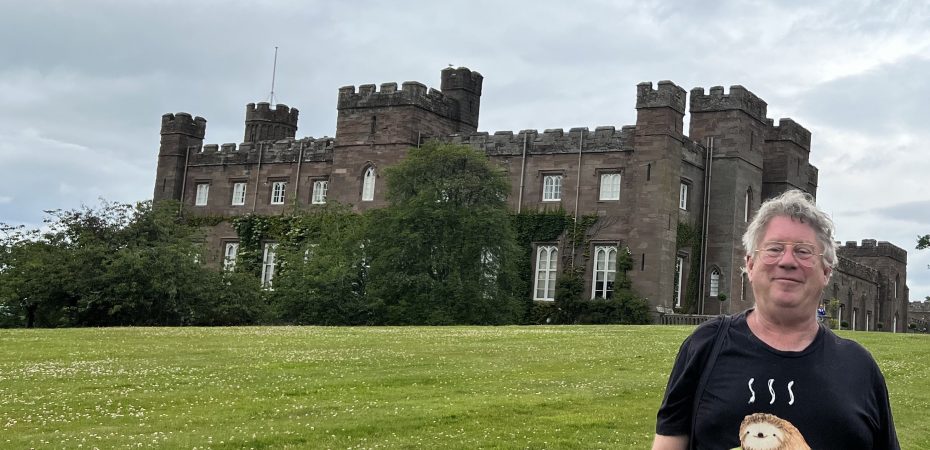We’re leaving Edinburgh today. The itinerary for the tour had us driving to a place and spending two nights in a hotel. This gave us lots of time to explore things in the area. We were heading to the Highlands.
I got an early start because I wanted to explore the Grassmarket area before leaving. It’s a wide, pedestrian area with shops and pubs. Our hotel on the left. The crowds had yet to gather. During the day the pubs setup patios on the bricks.
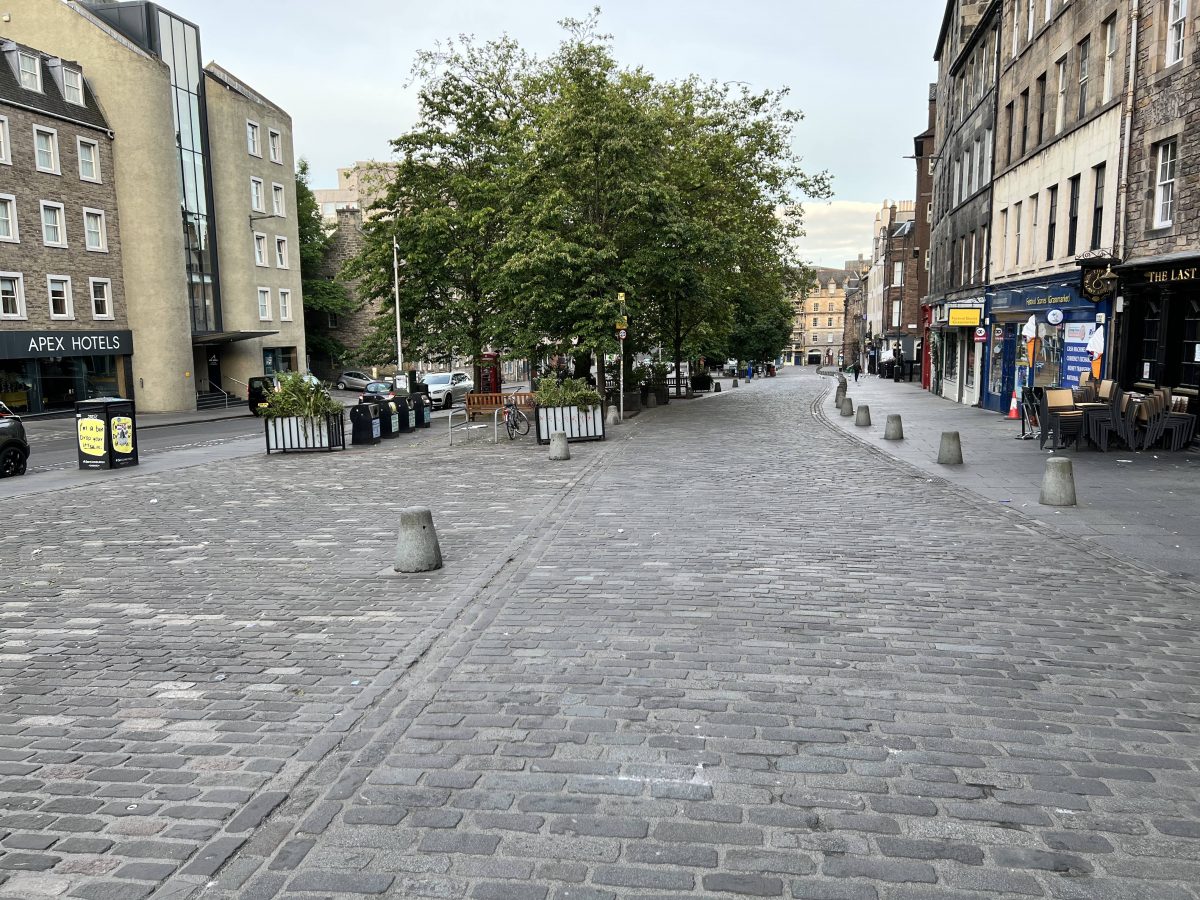
The Grassmarket is named because it was a market area for hundreds of years. In between the buildings are entrances called “Close”. They led to private dwellings. However, at market time, the animals would be herded into these areas for the night. The market was formed in 1477 under James III.
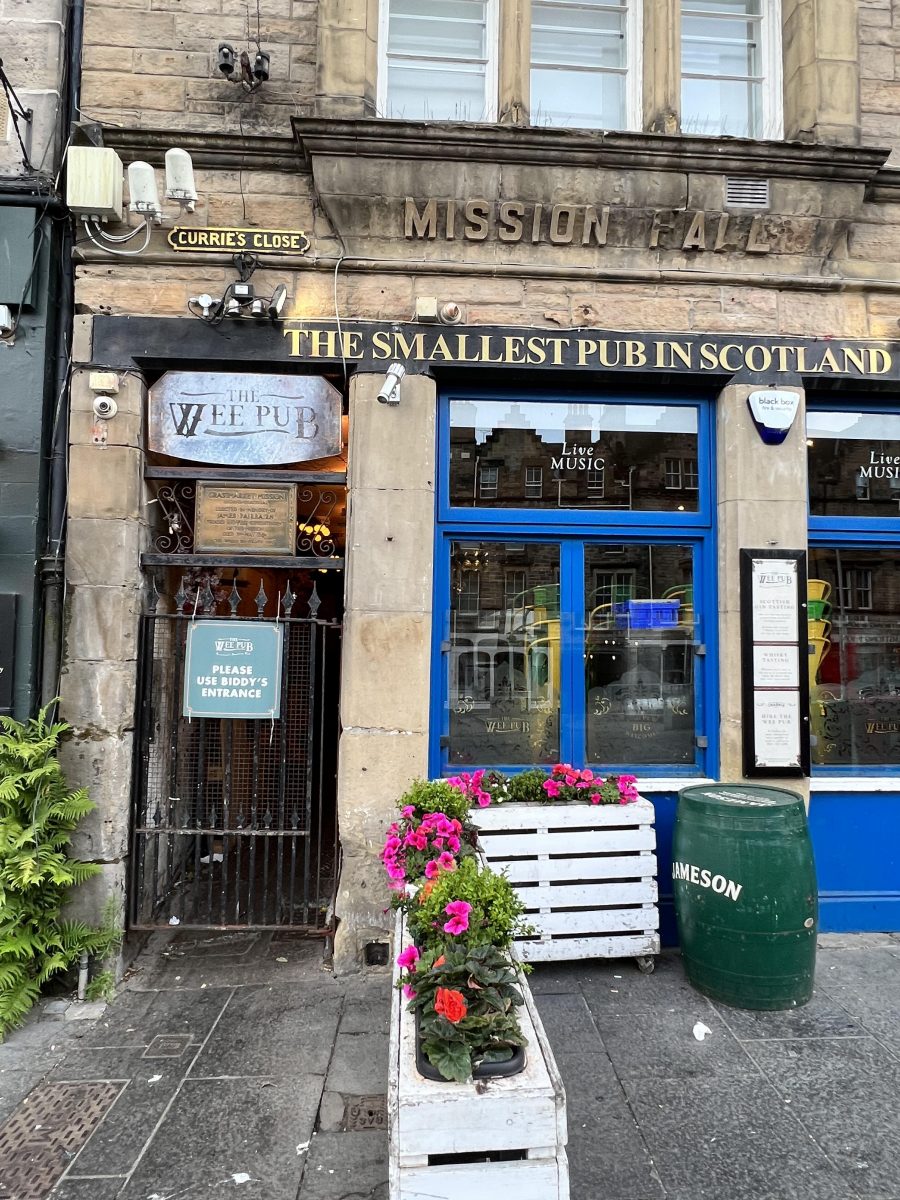
The White Hart is located here. I posted about the pub on the first day. A small plaque indicates that Robbie Burns spent some time there.
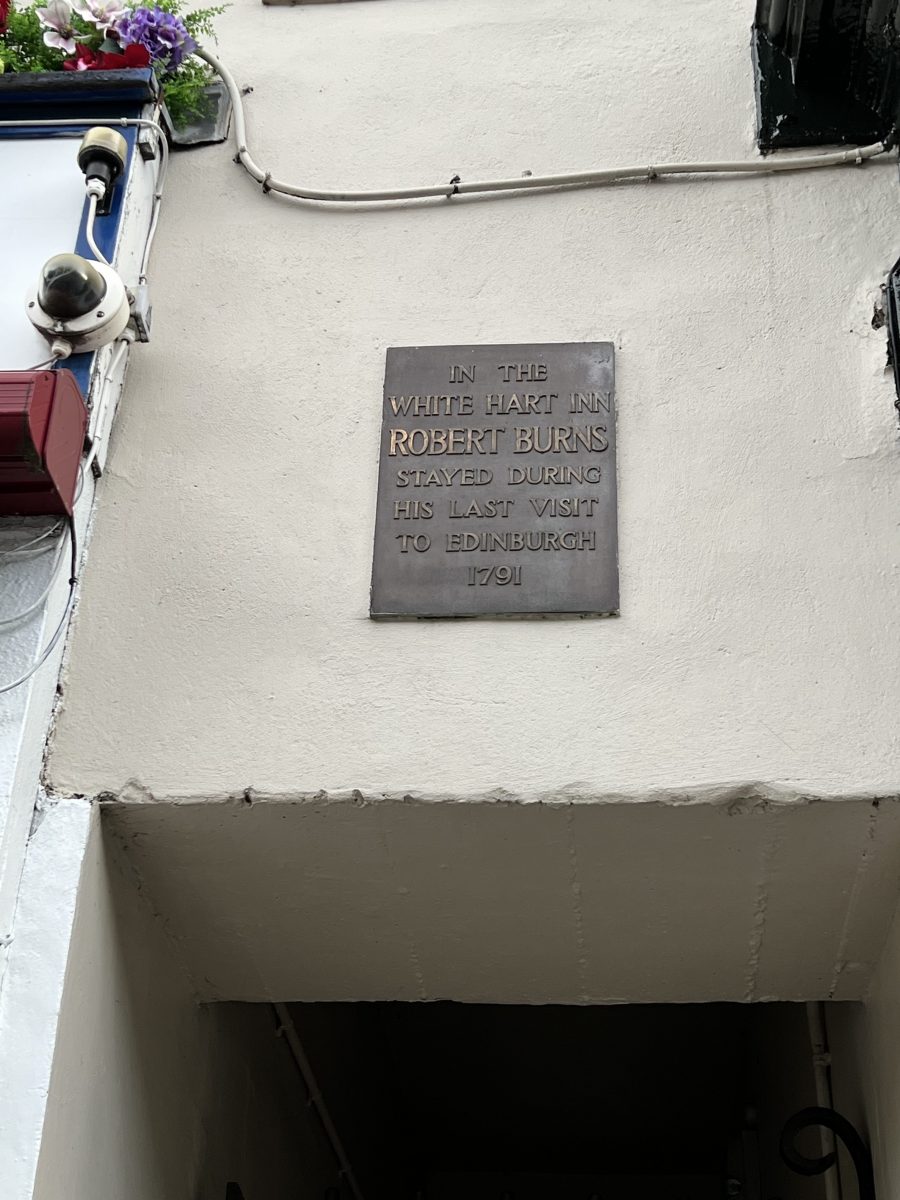
The Last Drop is not what you would expect. It is not about last call or drinking the last drop from your glass. Around 1660, the market became the place where public hangings took place. The Last Drop was a reference to either the last drink the prisoner took or to the scaffold’s trap door beneath their feet.
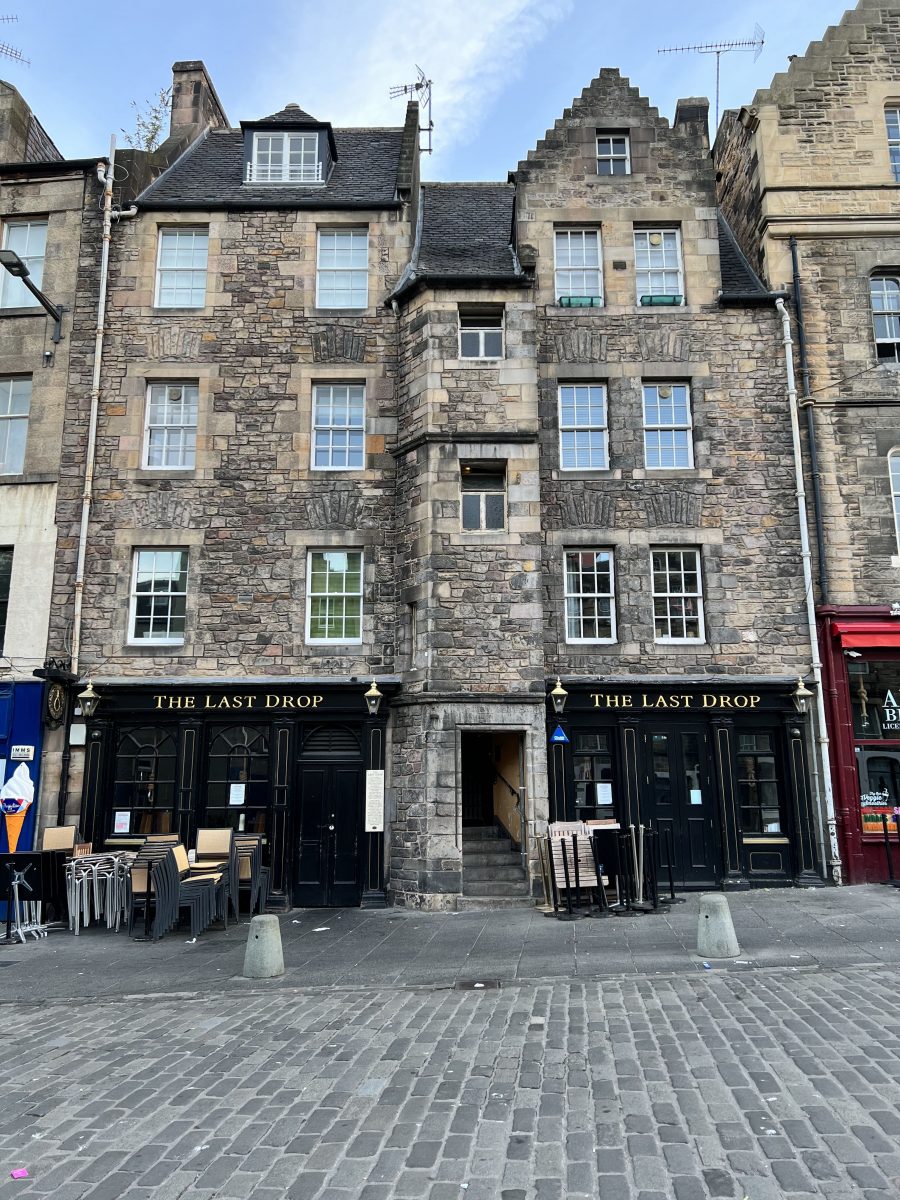
The Black Bull is located near where the market wall was. Early on, the market was outside the city walls. However, after the Battle of Flodden in 1513, the walls were strengthened and extended to include Grassmarket. The Black Bull was built around 1850, the area was for the “carters” – carts and horses as well as coach services.

Just a couple of steps away, across the street is The Vennel. It is a steep street that still contains remnants of the old Flodden wall. It was the boundary of Old Edinburgh
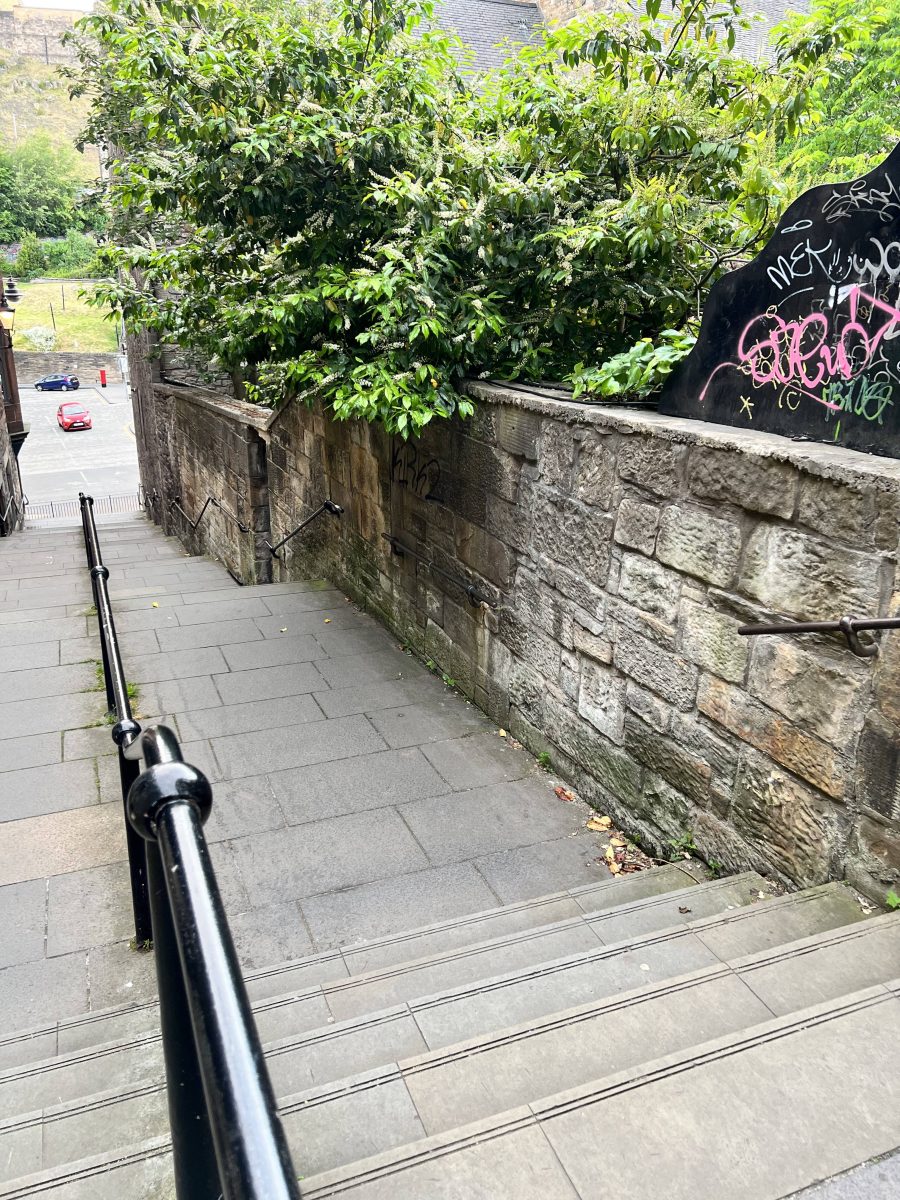
In 1969, the steps were featured in the movie “The Prime of Miss Jean Brodie”. In 2018, they were renamed “Miss Jean Brodie Steps” in honour of the author Muriel Sparks.
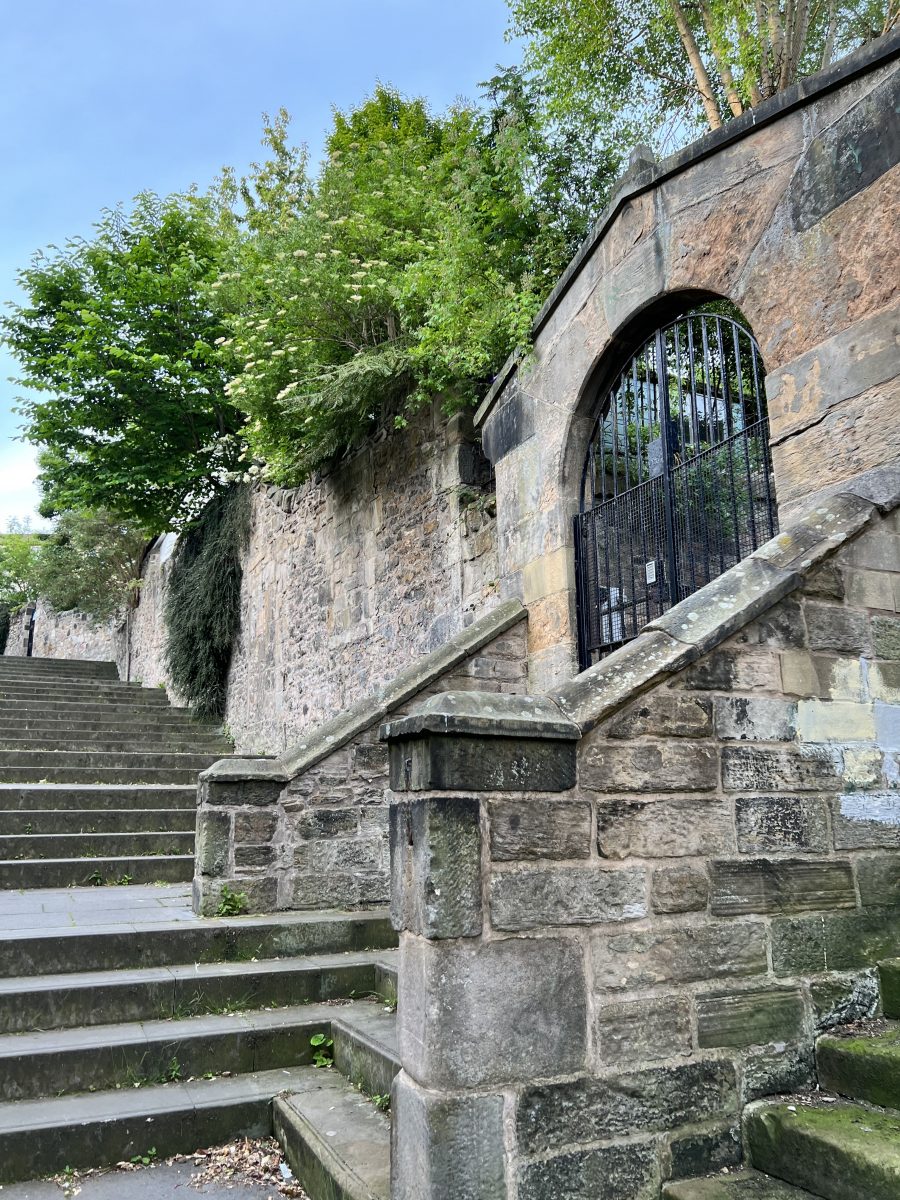
However, how they have become really famous for providing an amazing photo opportunity of the Edinburgh Castle. Even Google Maps has it listed as a photo event. It gets very popular but, as I was out early, I was able to get a photo without people in it. The castle is just catching the sunrise.
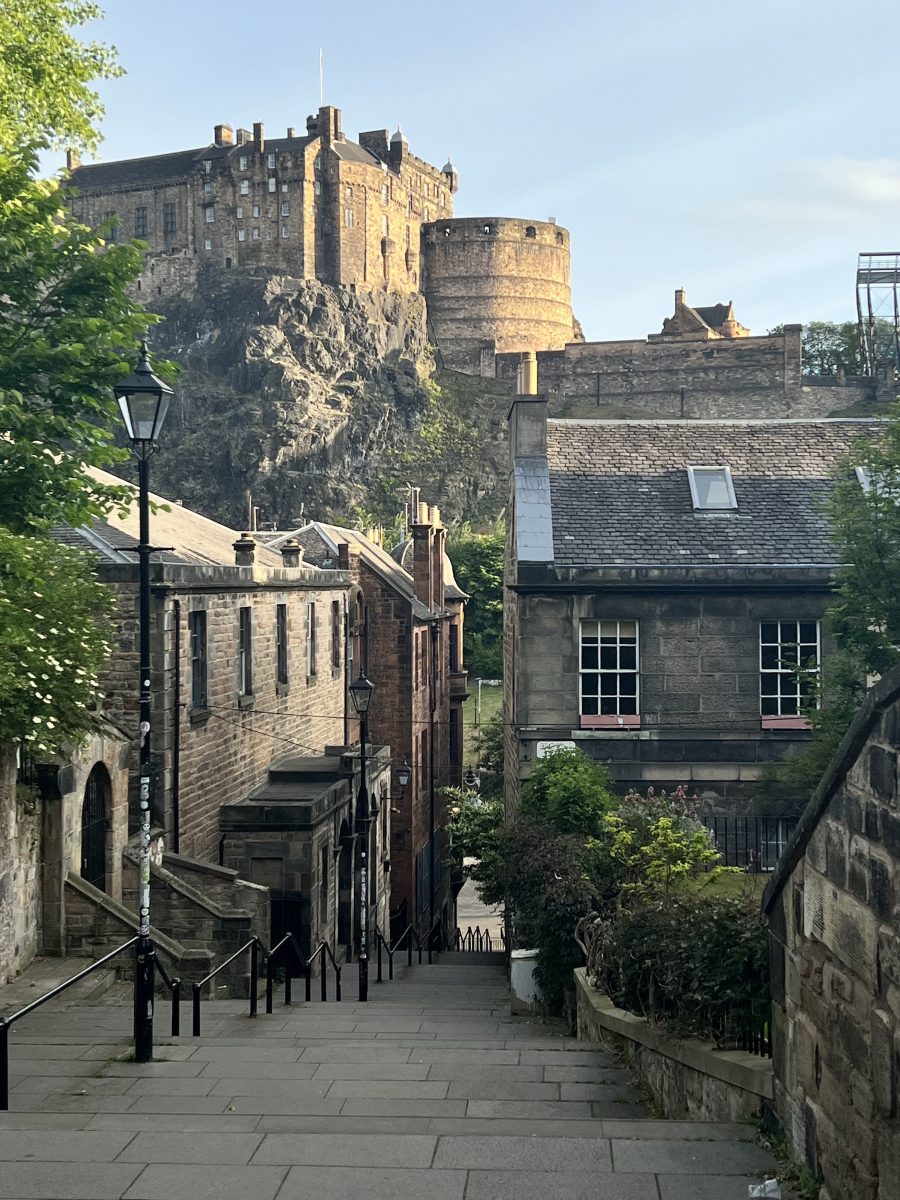
Heading back to the Grassmarket, I sat on a bench and watched a gentleman walk his dog. Soon others were heading off to work.
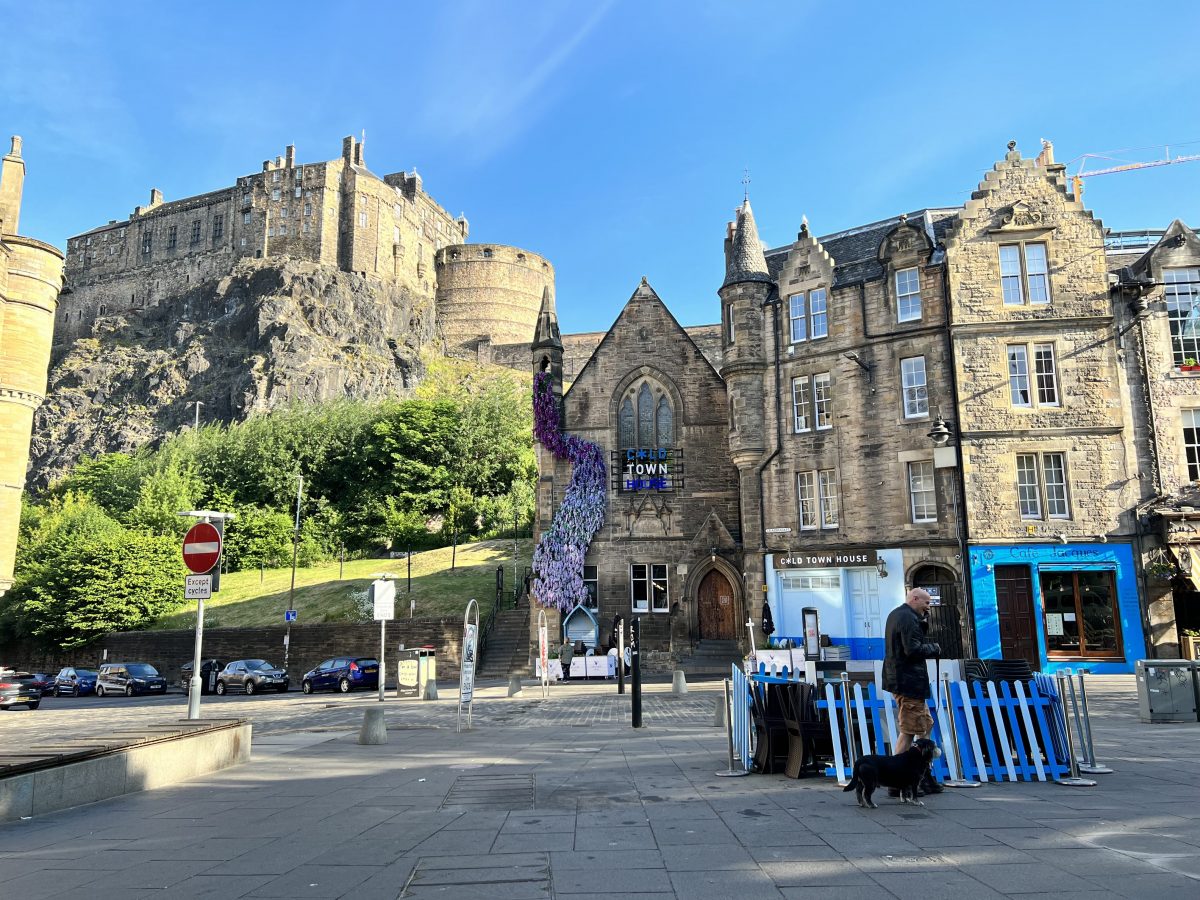
Today takes us into the Highlands and Cairngorms National Park. We were supposed to visit a Scotch distillery but they had to cancel as they didn’t have the staff to conduct a tour. However, arrangements were made for a distillery tour in Glasgow.
In the photo below you can see a stone tower on the hill, just left of centre. There are not many left but they were used to watch for invaders, particularly Vikings.
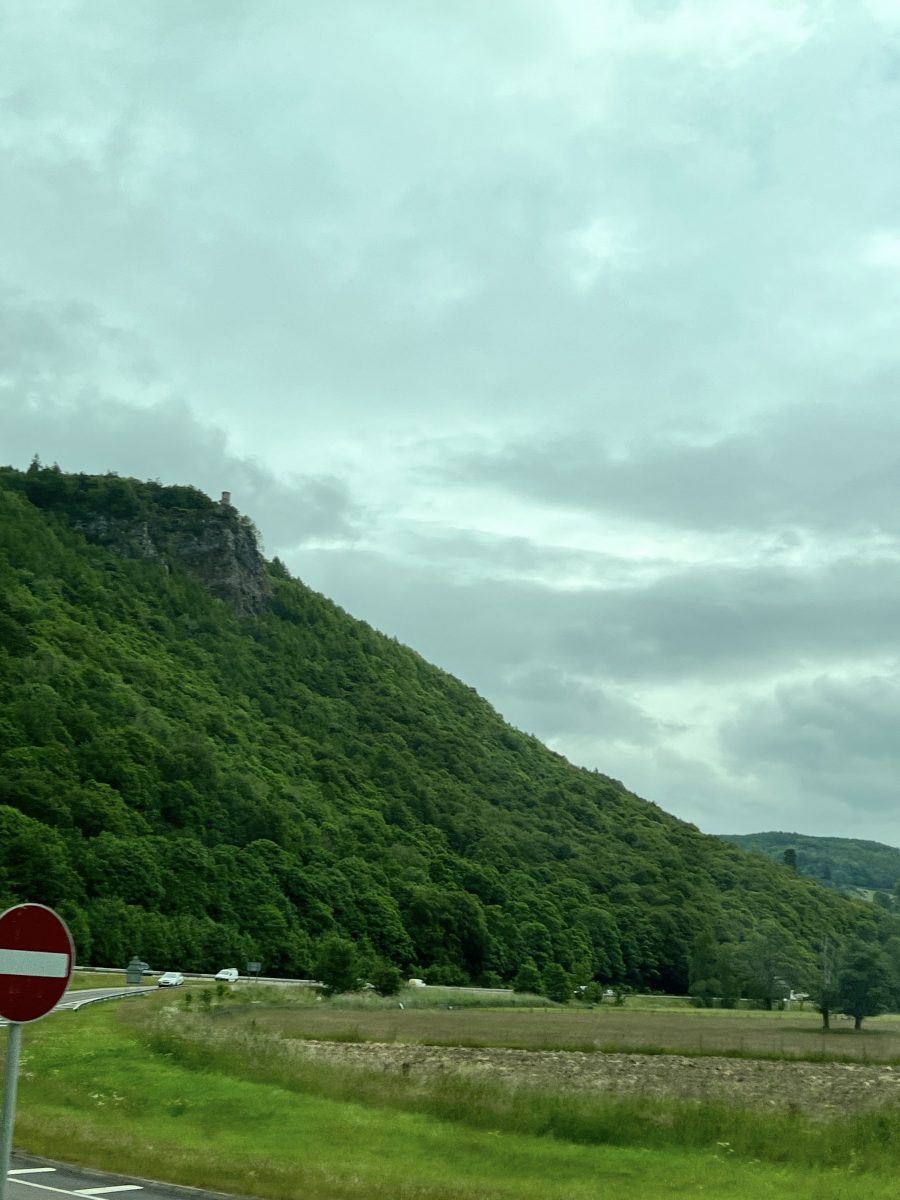
We reached our destination – Scone Palace (rhymes with soon). We had a private tour arranged and the guide was excellent. The palace has been home to the Earls of Mansfield for over 400 years. And they have collected quite a bit of stuff in all those years.
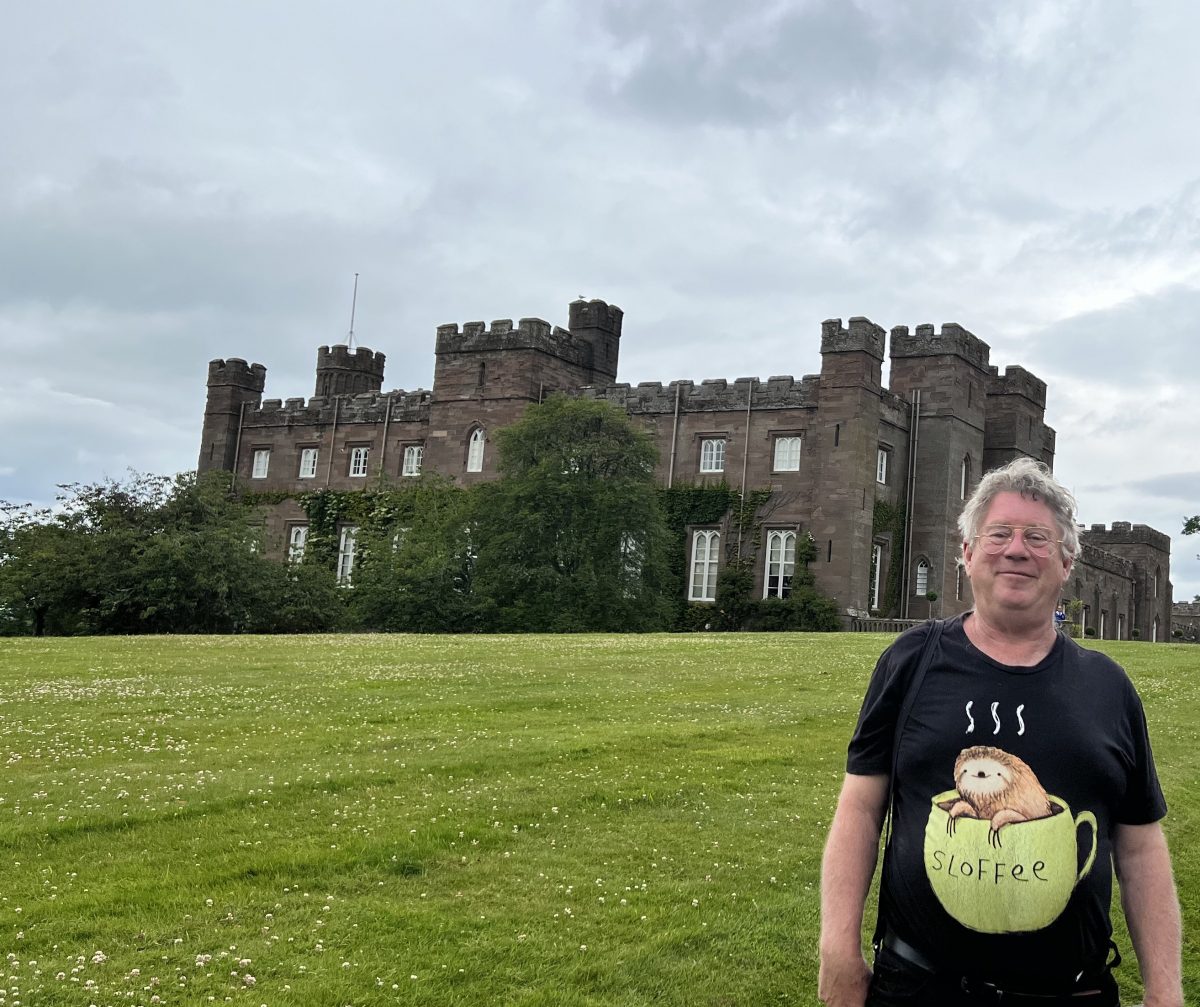
Before we get to the palace, I need to mention the Highland Hairy Coos. You may be familiar with these hairy beasties that were bred in the Highlands. Although not on our itinerary, I really wanted to see some. And so did our tour manager, Jayne. Colin our coach driver assured us there would be a small herd at Scone.
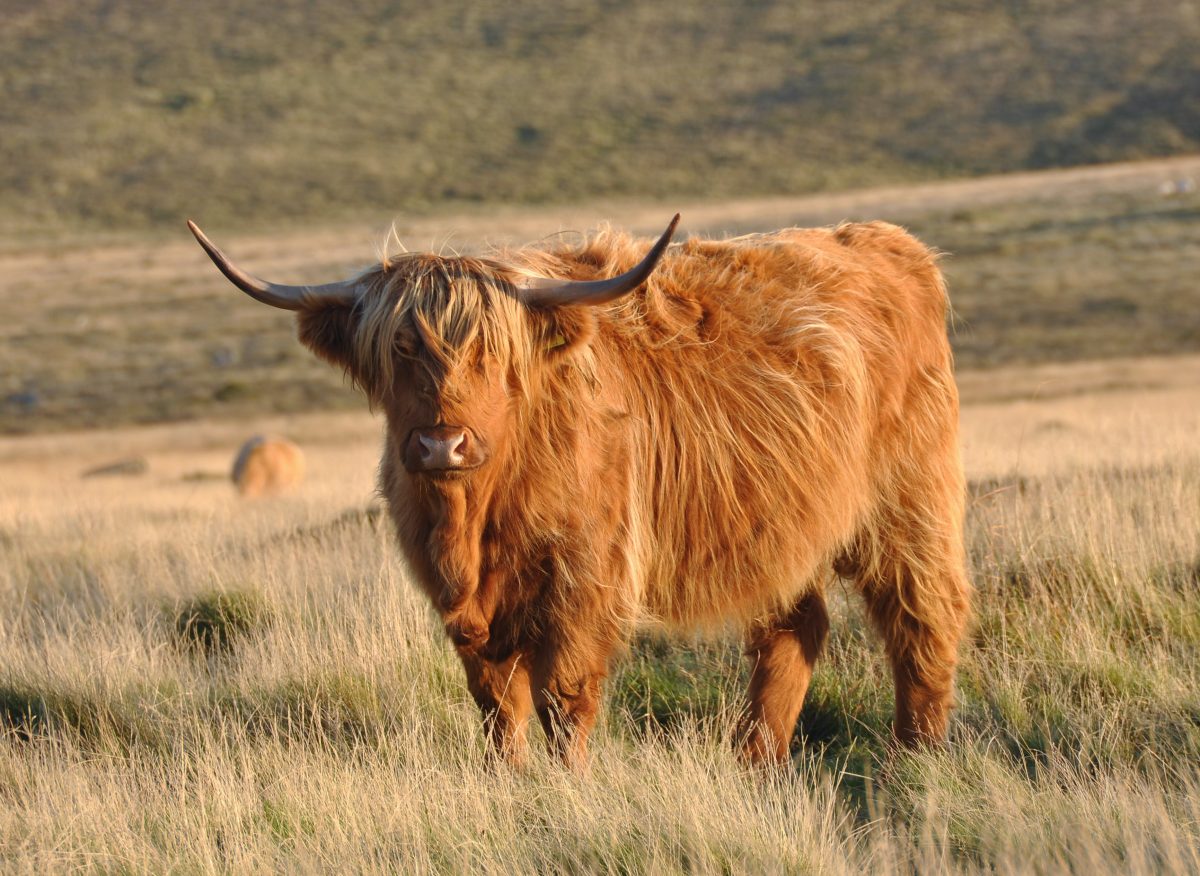
However, after looking around, I couldn’t find them. Colin said they were in a lockup just a couple of weeks ago when he was here with another tour.
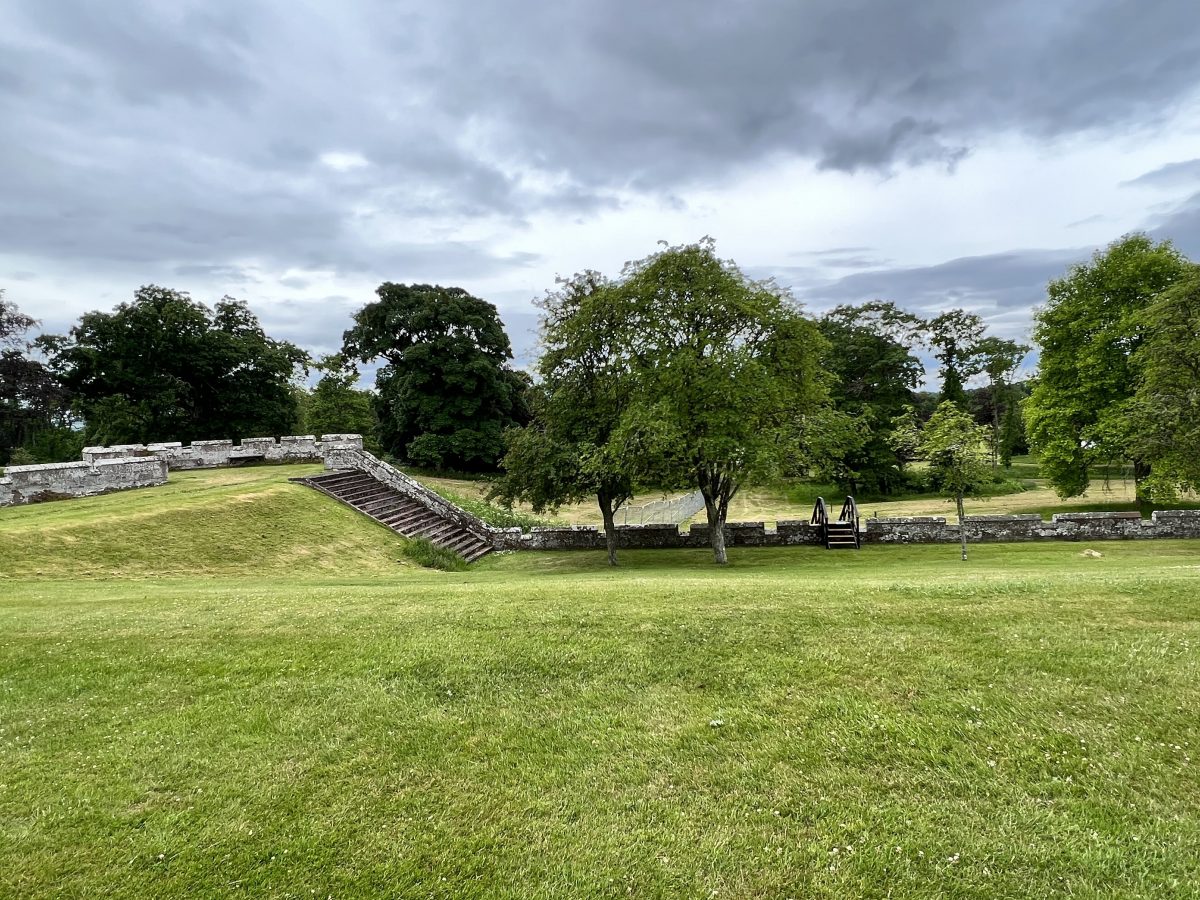
However, the peacocks came out as a replacement for the coos.
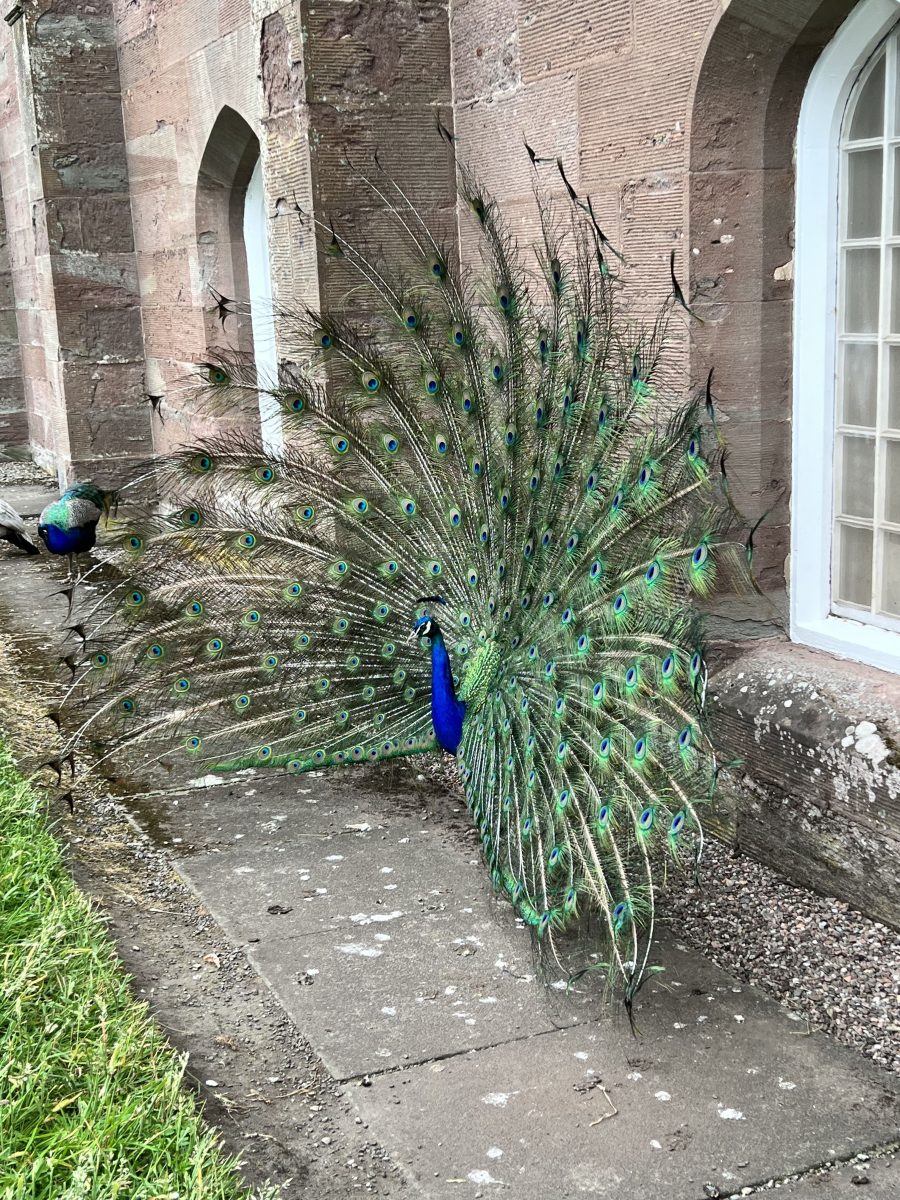
Currently, Scone Palace is home to the 9th Earl. The present palace was built around 200 years ago. It was the site of an early Christian church and, later, Scone Abbey. It was one of the most important abbey’s in Scotland. But the Abbey was destroyed by the followers of Scottish Reformer John Knox.
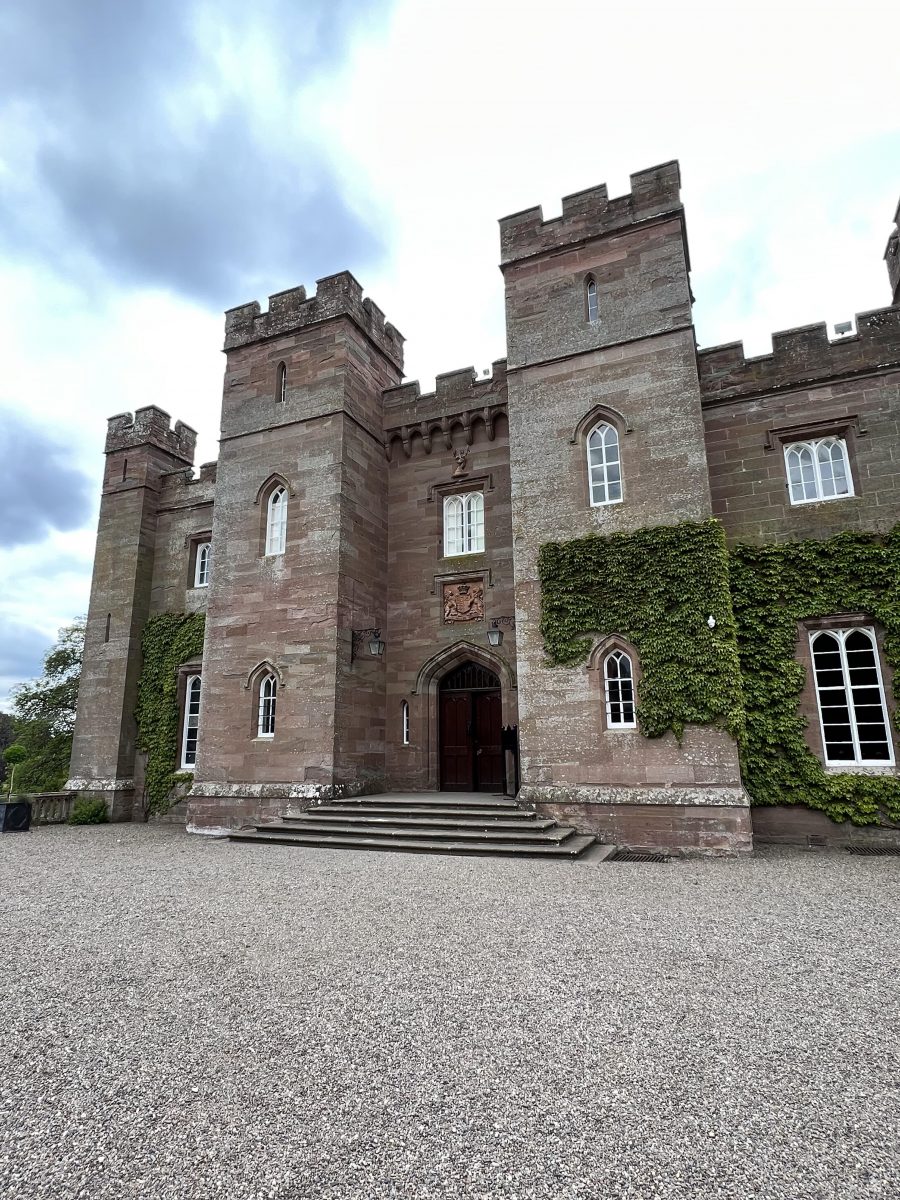
About 42 kings were crowned at Scone. The first one was in 843 AD. The last was Charles II in 1651. So it does represent a major site in Scottish history. There is a parquet oak floor that was part of the original palace.
This stone building was used for meetings, law making and councils throughout the medieval period. The ancient Pics established this area as a meeting point in the 6th Century. It was believed that the first King of the Pics, Kenneth, brought the Stone of Scone to this building. It was then used as part of the crowning of Scottish kings and stored in the abbey. The stone at Scone is a replica of the one in Edinburgh Castle.
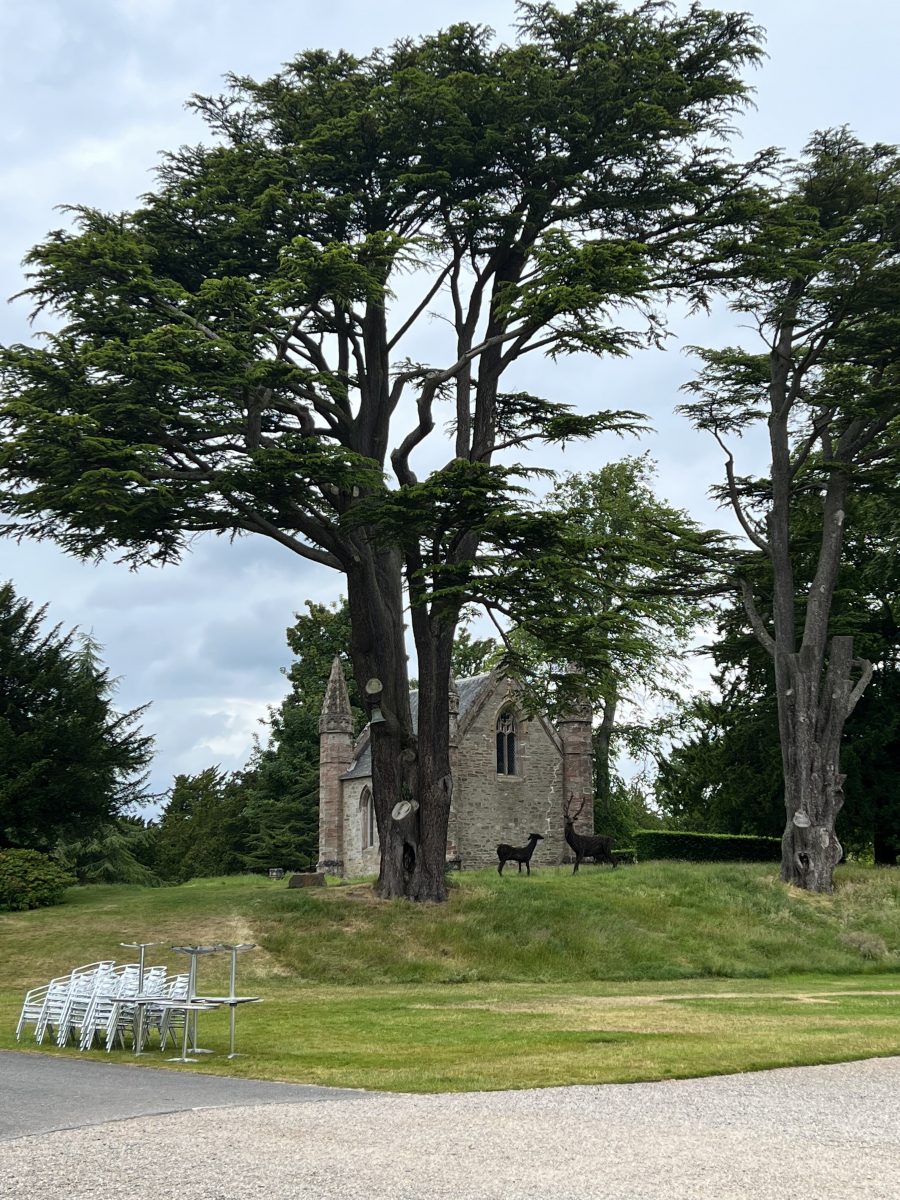
Interesting note that, during World War II, the stone was hidden in Westminster Abbey and the secret location was sent to the Canadian Prime Minister as a safeguard. Or maybe the stone at Scone Palace is a backup in case the Edinburgh one gets lost again.

This long hallway was used by Queen Victoria to play curling when she came for a visit. The rug was rolled up, the floor waxed and polished and the granite skidded along. Also, note the flooring as this was part of the original palace.
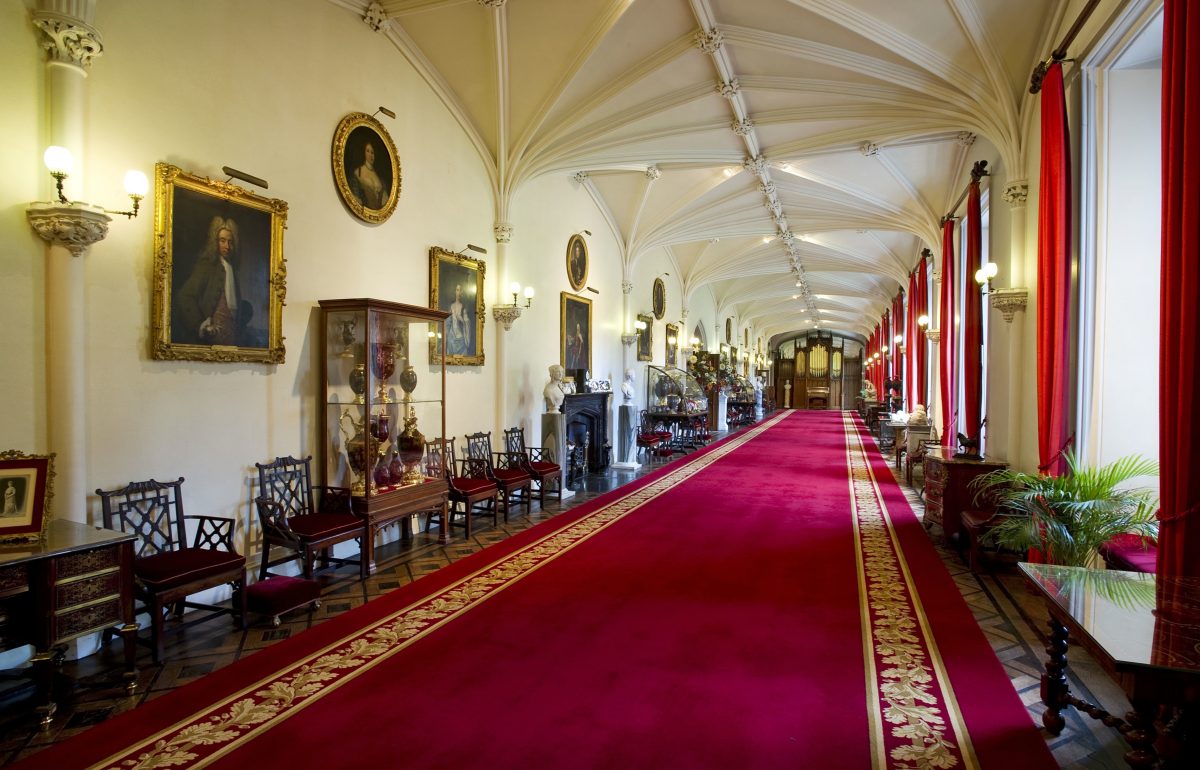
This room is called the Library. However, it was decided the books posed too much of a fire risk. So they were replaced by the china sets collected over the years.
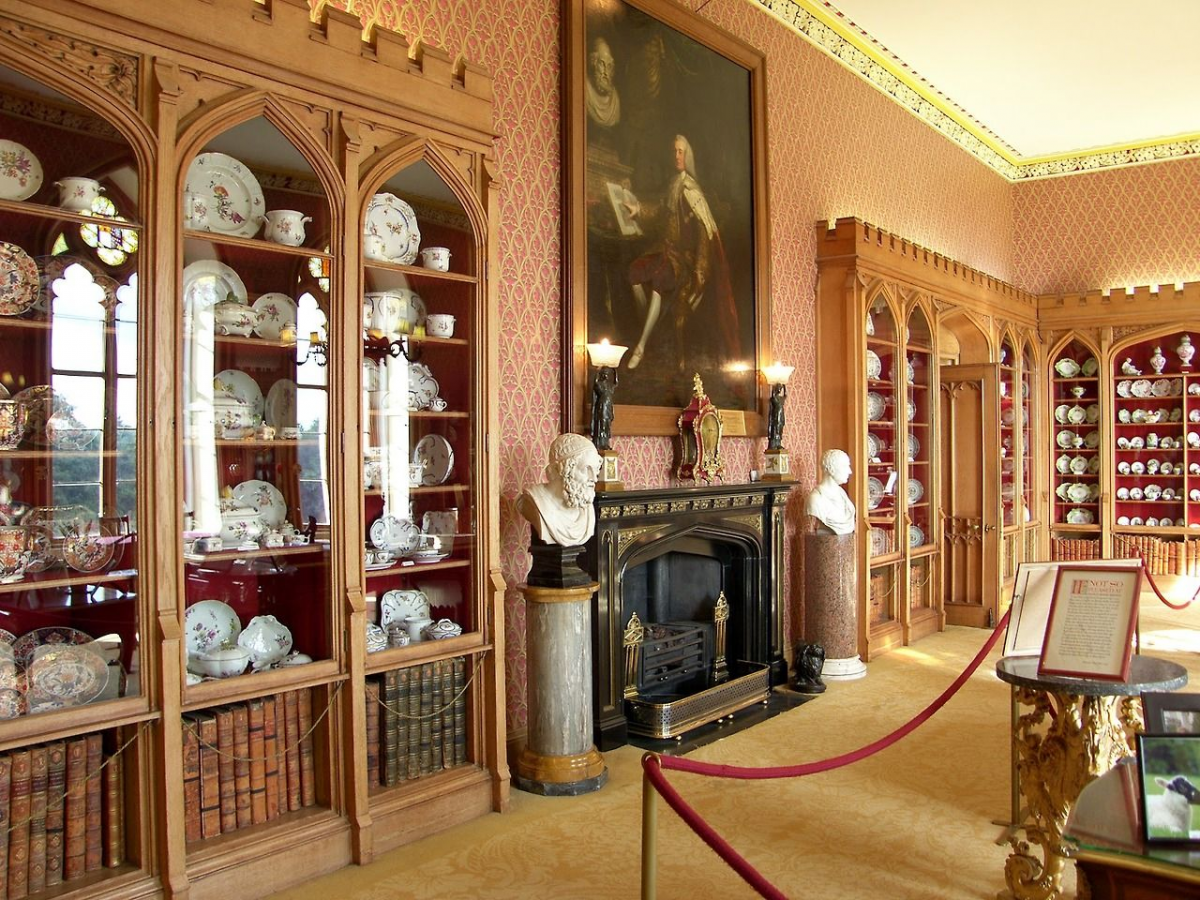
One of the Earls was Ambassador to France. Marie Antoinette presented him with this writing desk. It is one of the prized antiques at the palace.

I jokingly referred to this room as the man cave because of the bears. Apparently they were a gift from Russia to the ambassador so he brought them home.
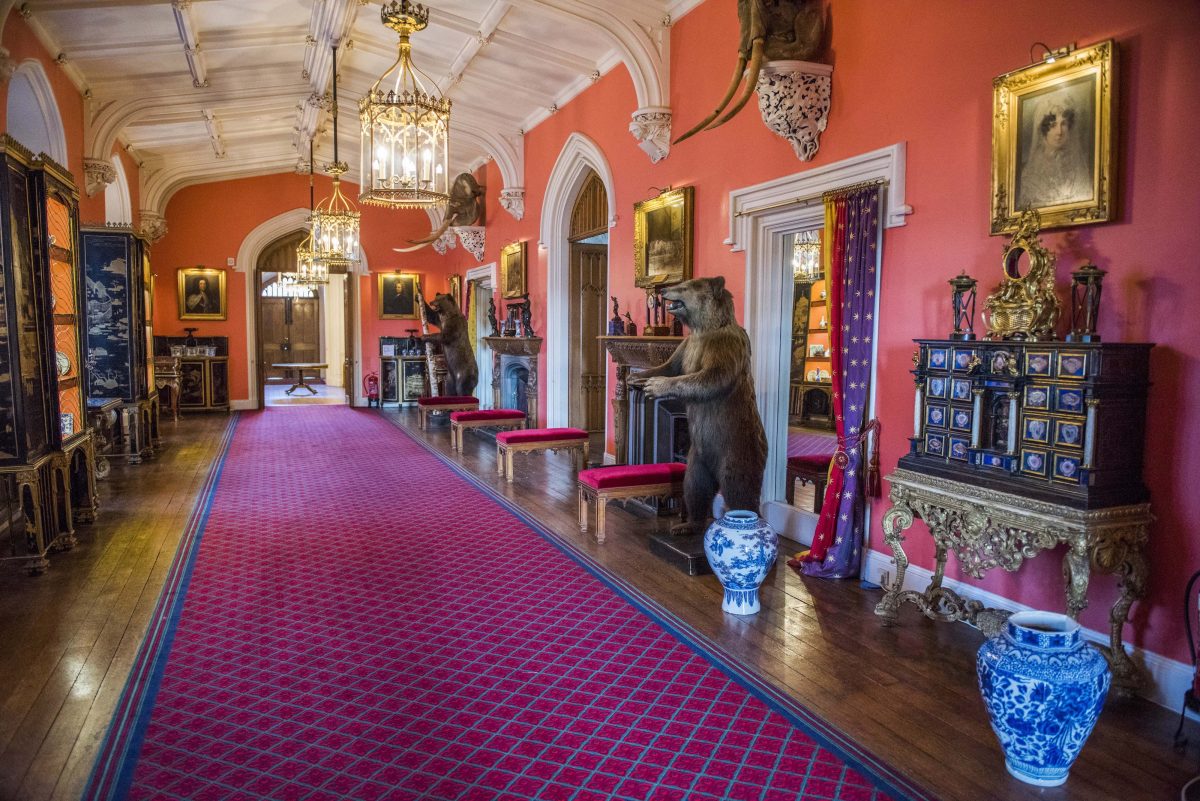
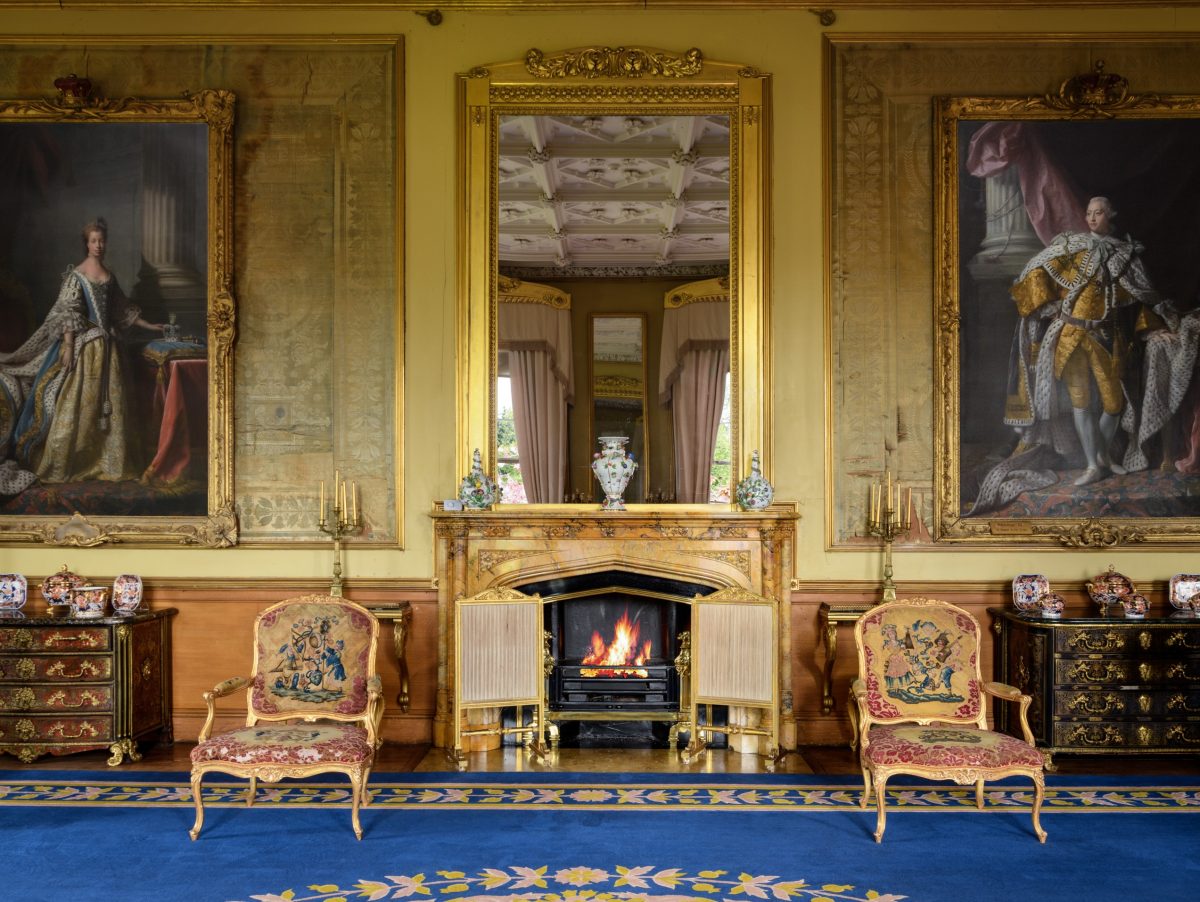
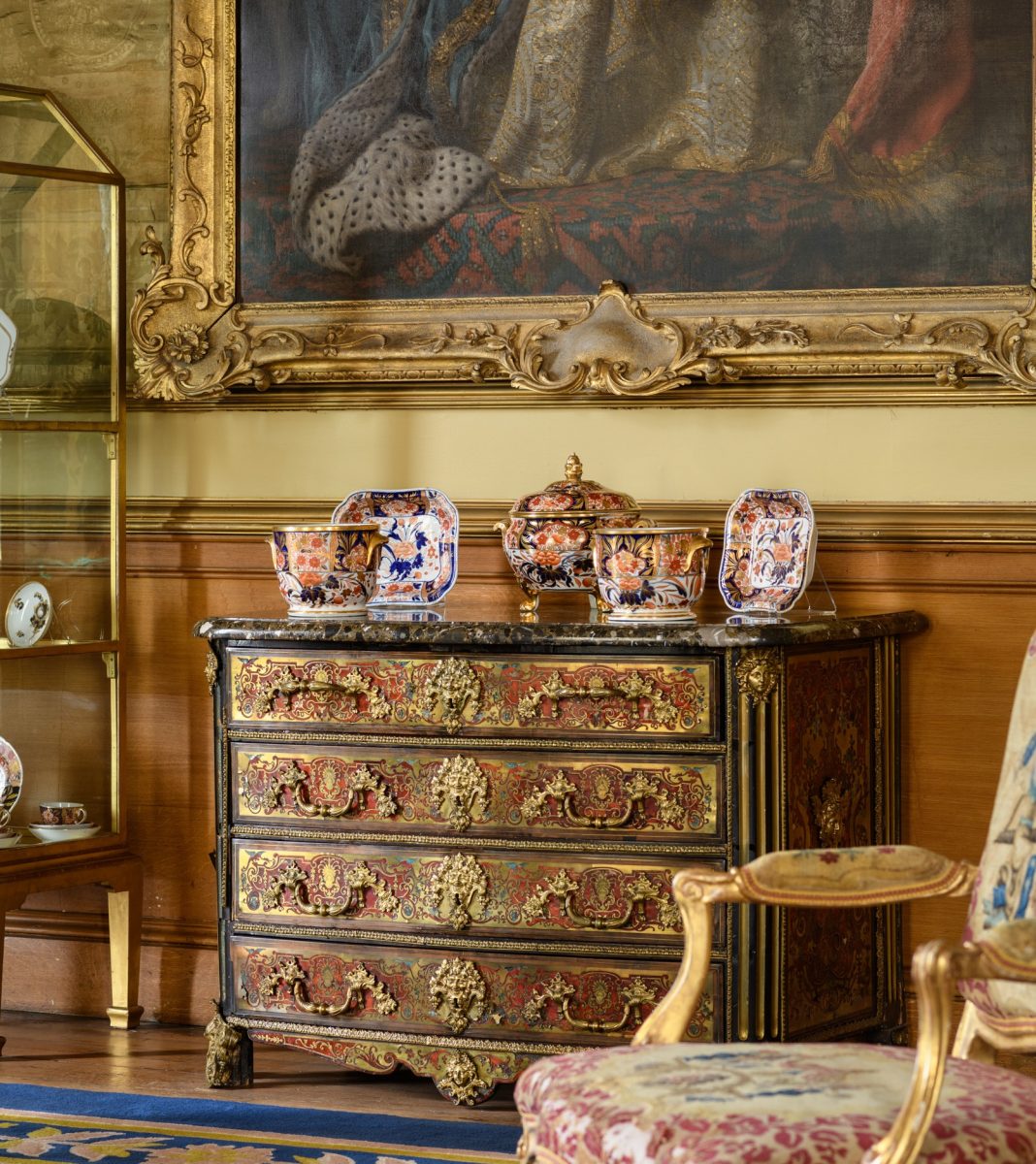
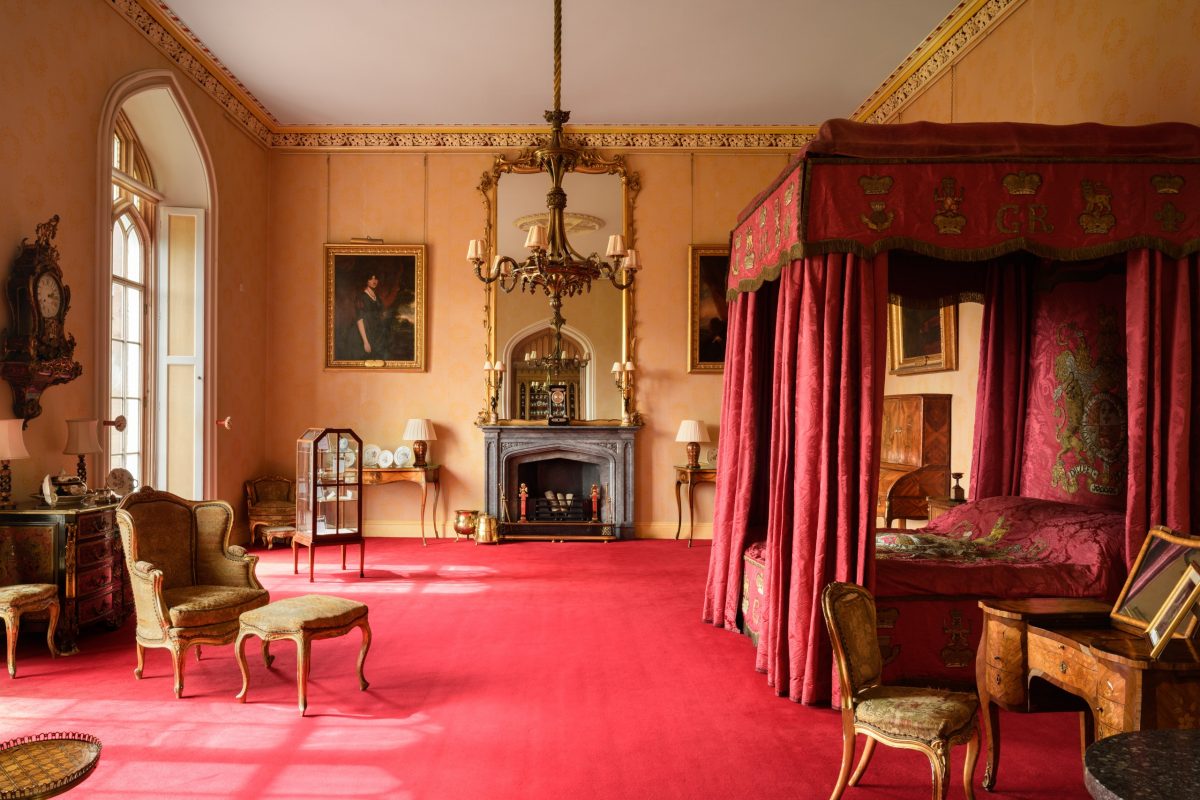
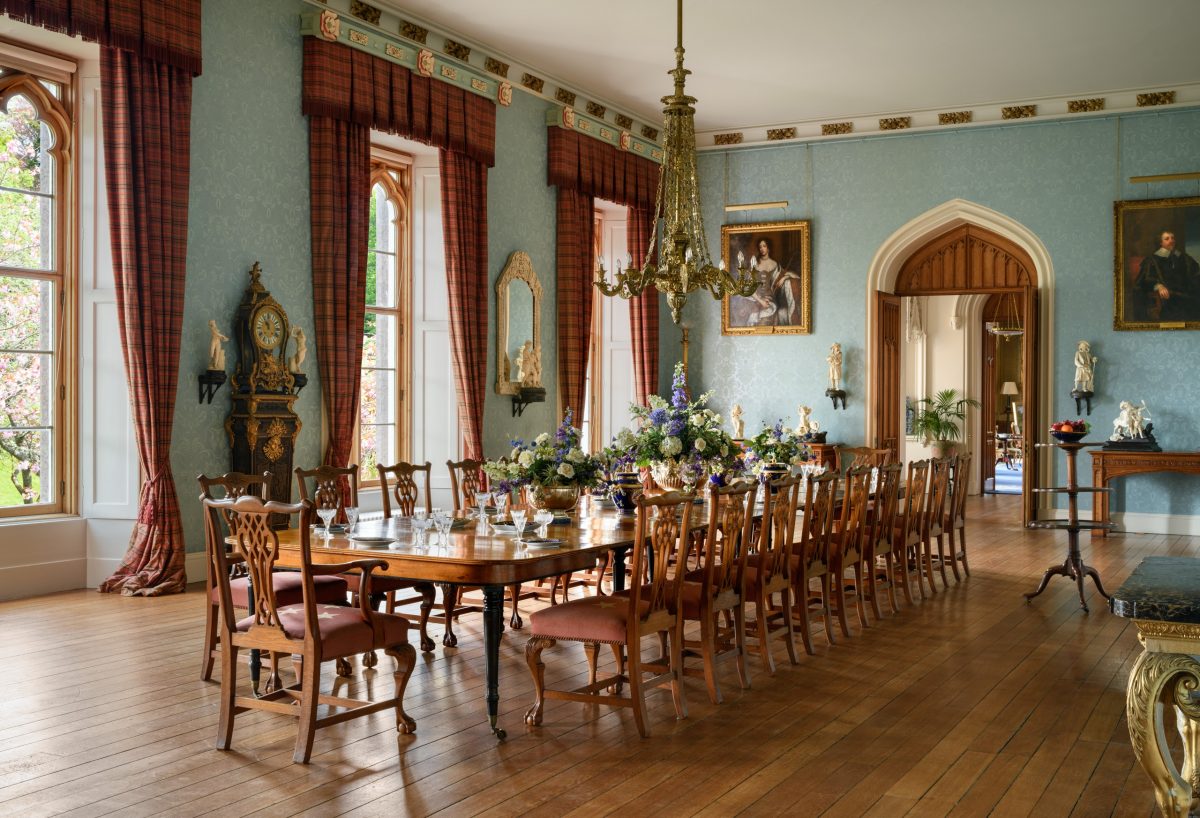
I still had some time before the bus left and went to see the garden. But I had to go through a maze like structure so turned around. On the way, passed a cemetery
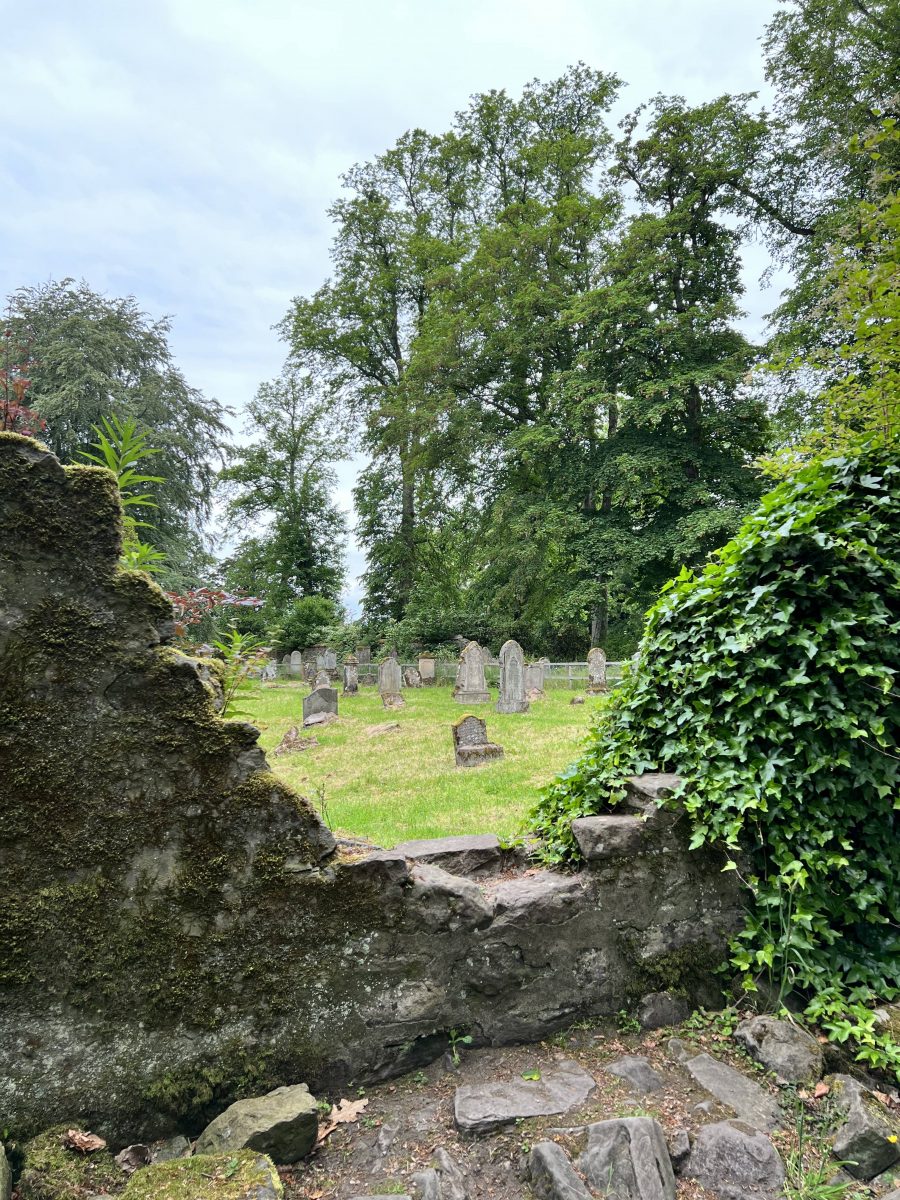
And had one more look around for the coos. I did admire how that big tree framed the palace.
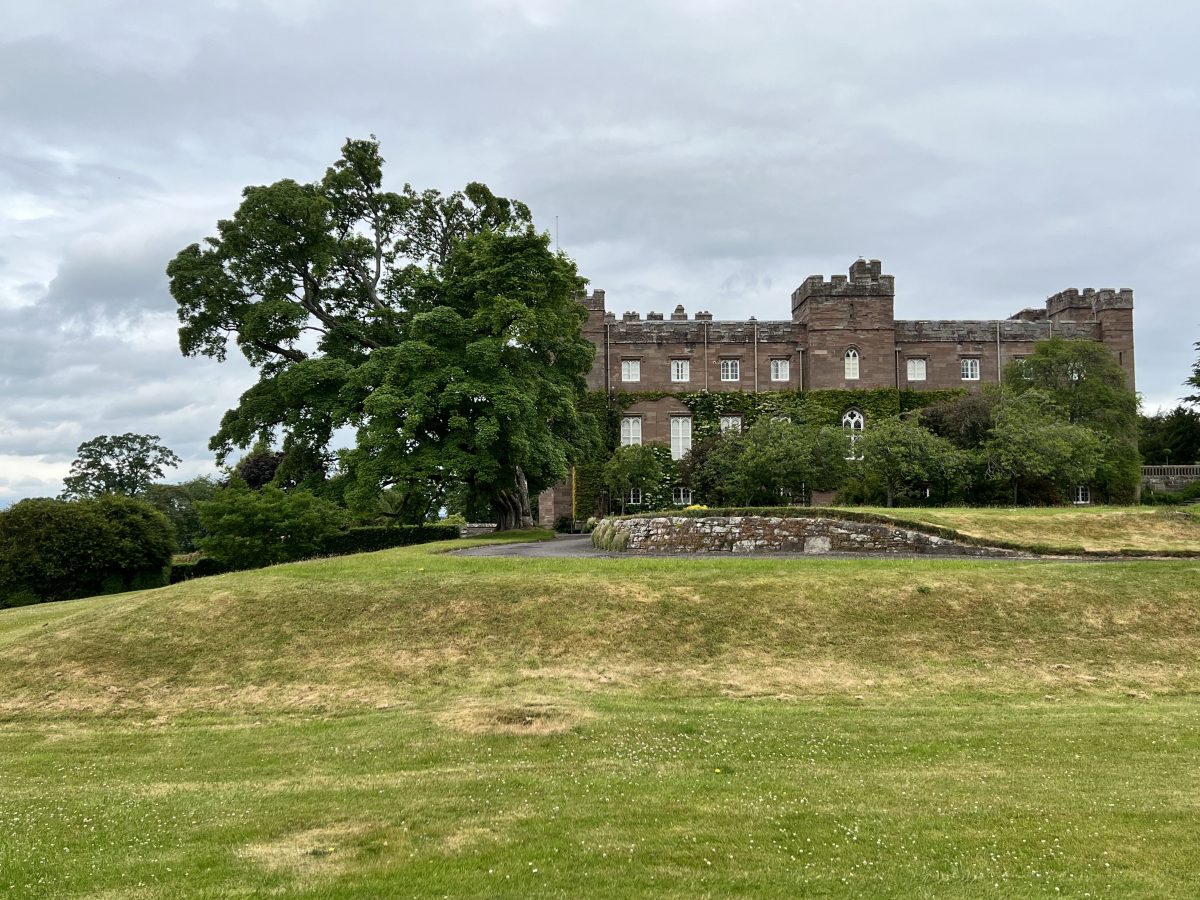
After all that walking it was time for lunch. We stopped at a little town called Pitlochry. Colin had recommended a fish and chip place where most of the group went. I had already had fish and chips yesterday and was going to have them tomorrow. So I went to MacKay’s Restaurant for a Haggis Burger with gravy and chips and a pint of Ben Y Vrackle bitter.
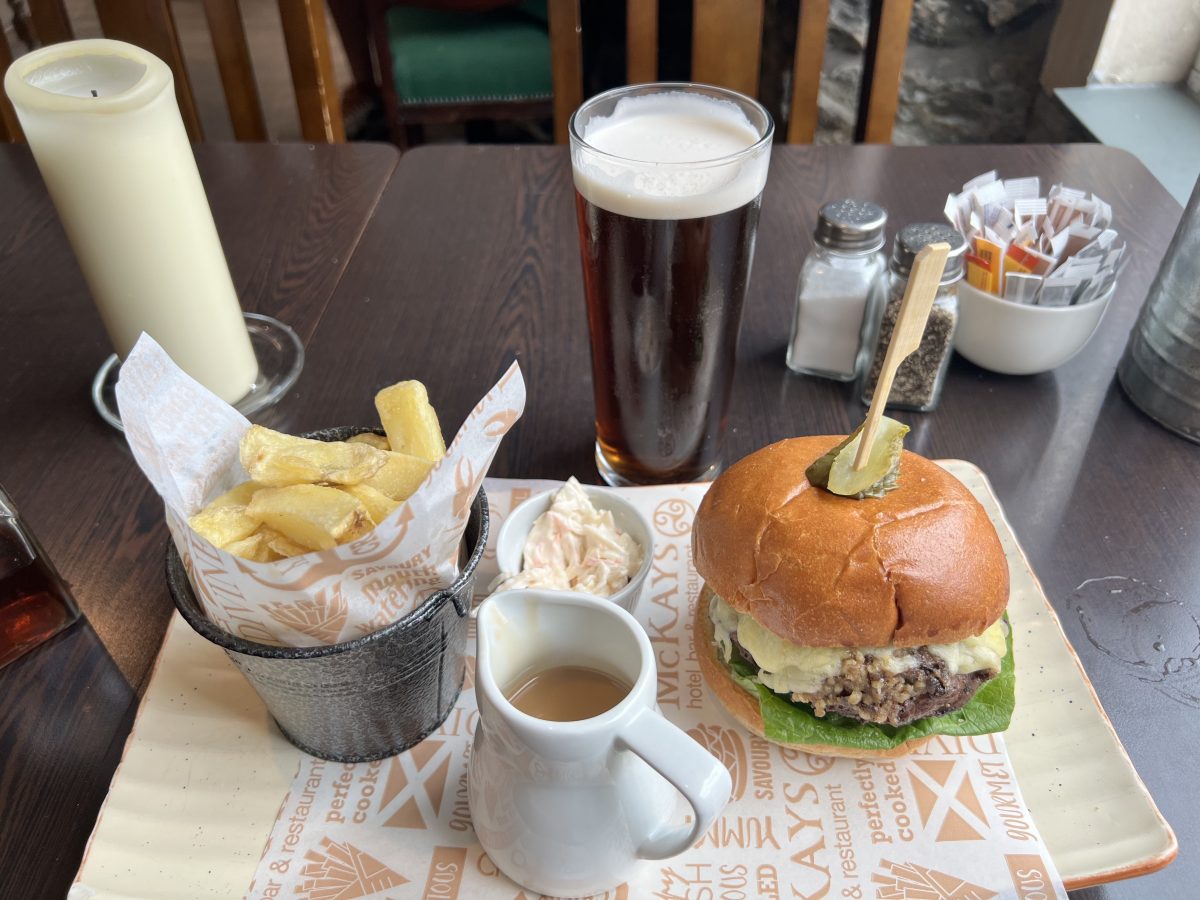
Colin took us for an amazing view of the Highlands. It’s called Queen’s View and overlooks Loch Tummel. There are two stories of why it is called Queen’s View. Named after Queen Victoria after she visited it in 1866. Or after Robert the Bruce’s wife, Isabella, 500 years earlier. There is a visitor centre, cafe, gift shop and washrooms.
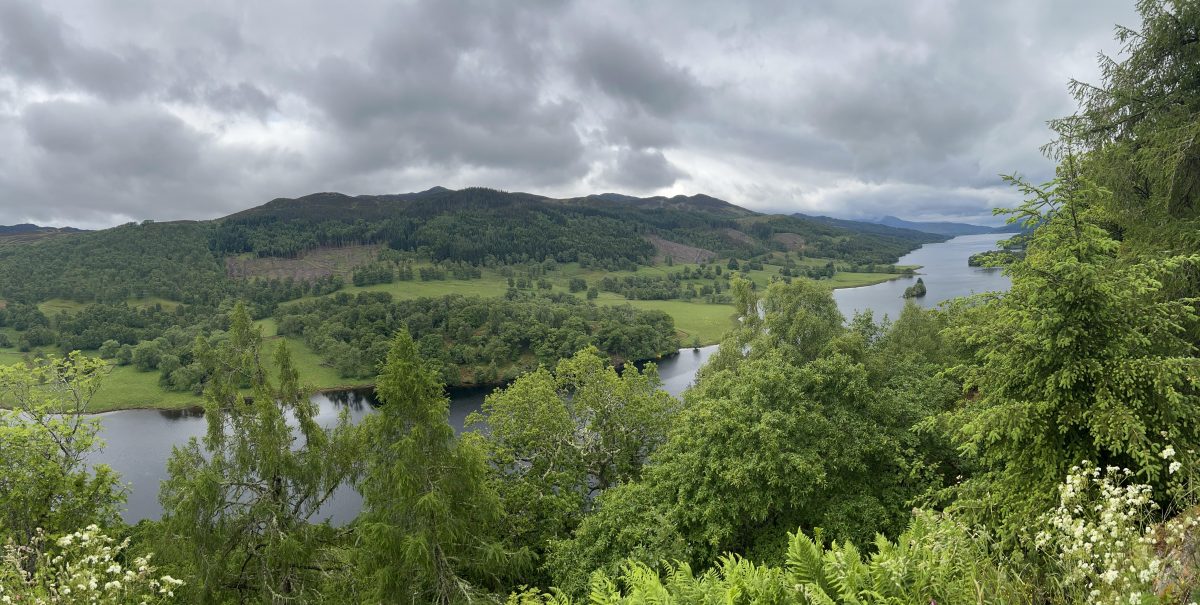
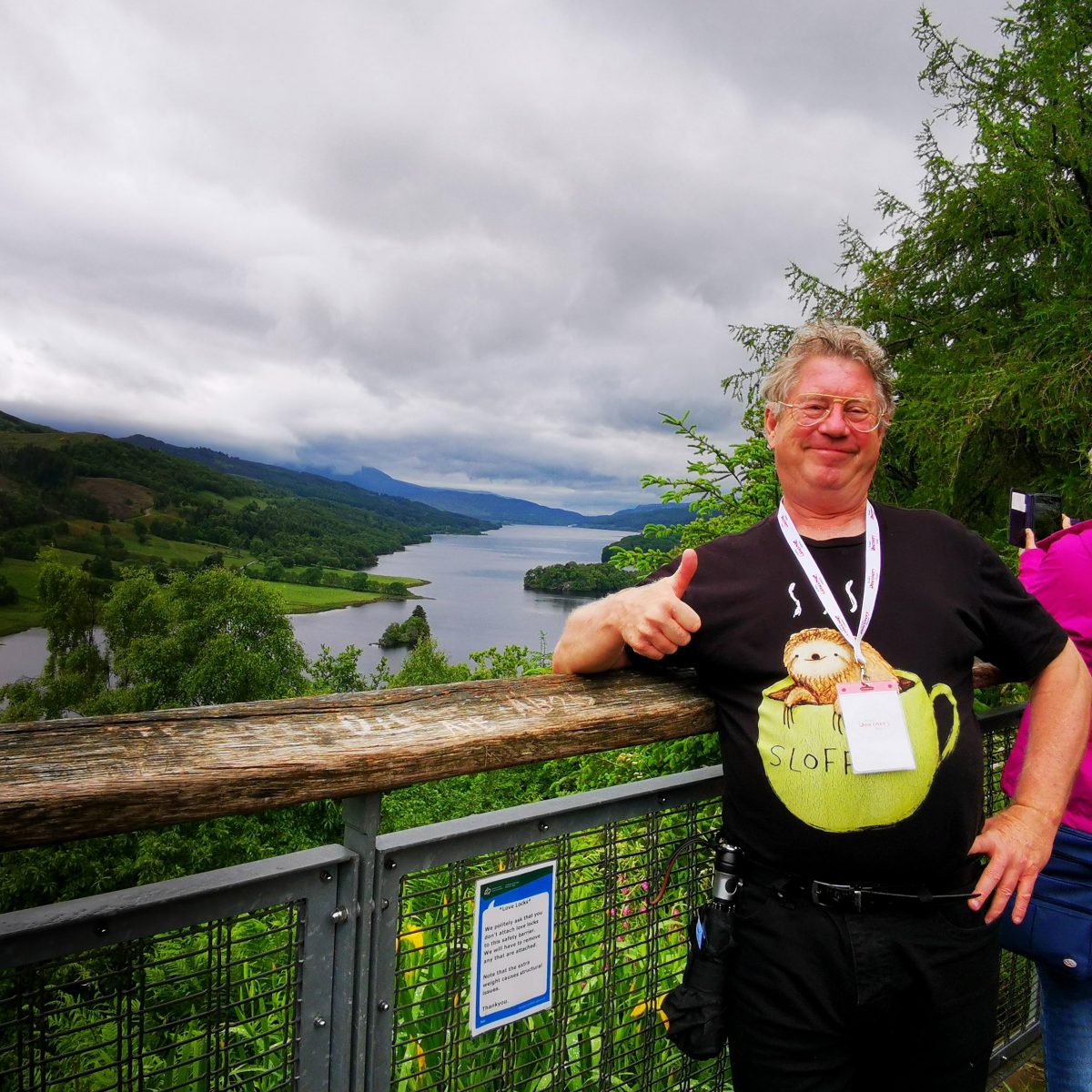
The wee sheep way down there – grazing.
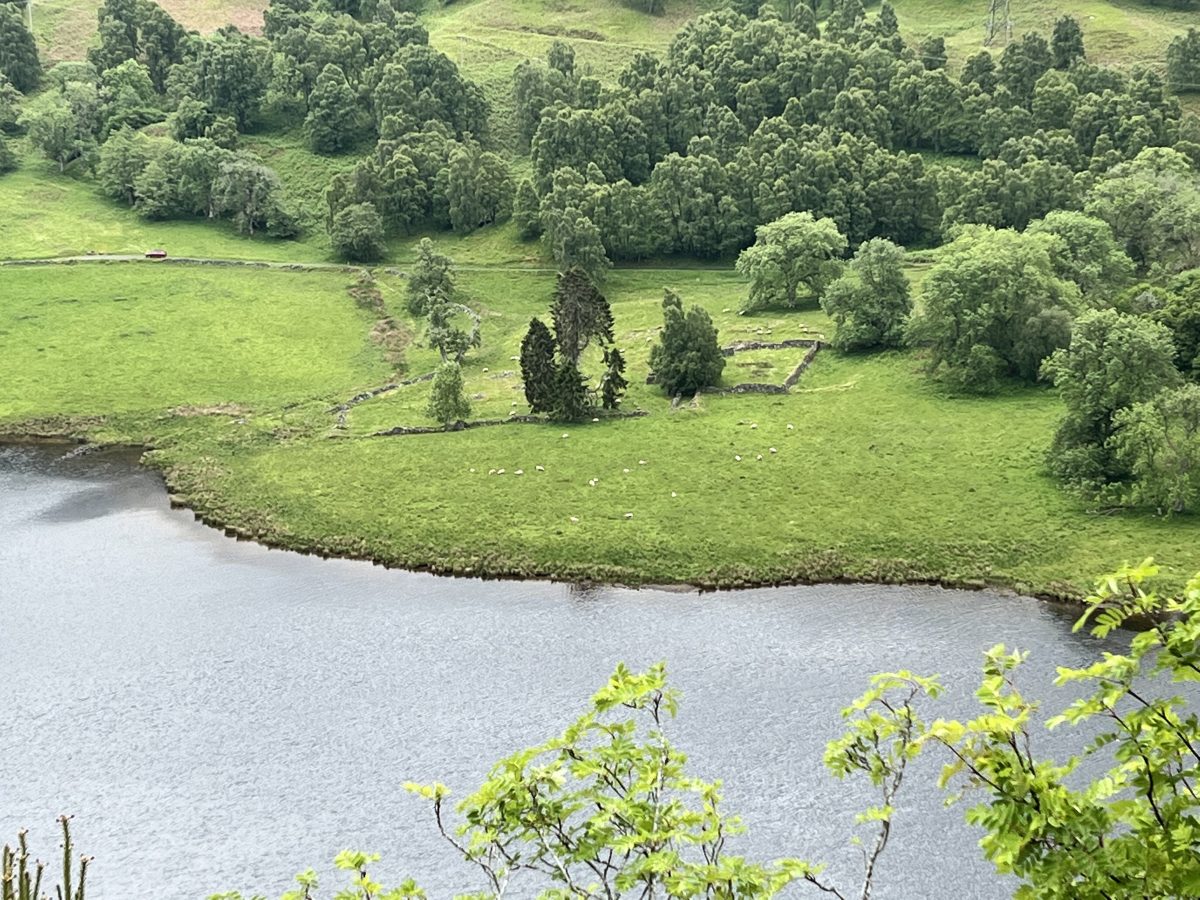
We passed by the Dalwhinnie Distillery on our way to Newtonmore and our hotel. Also a whisky tanker truck passed us by going from Inverness to Glasgow.
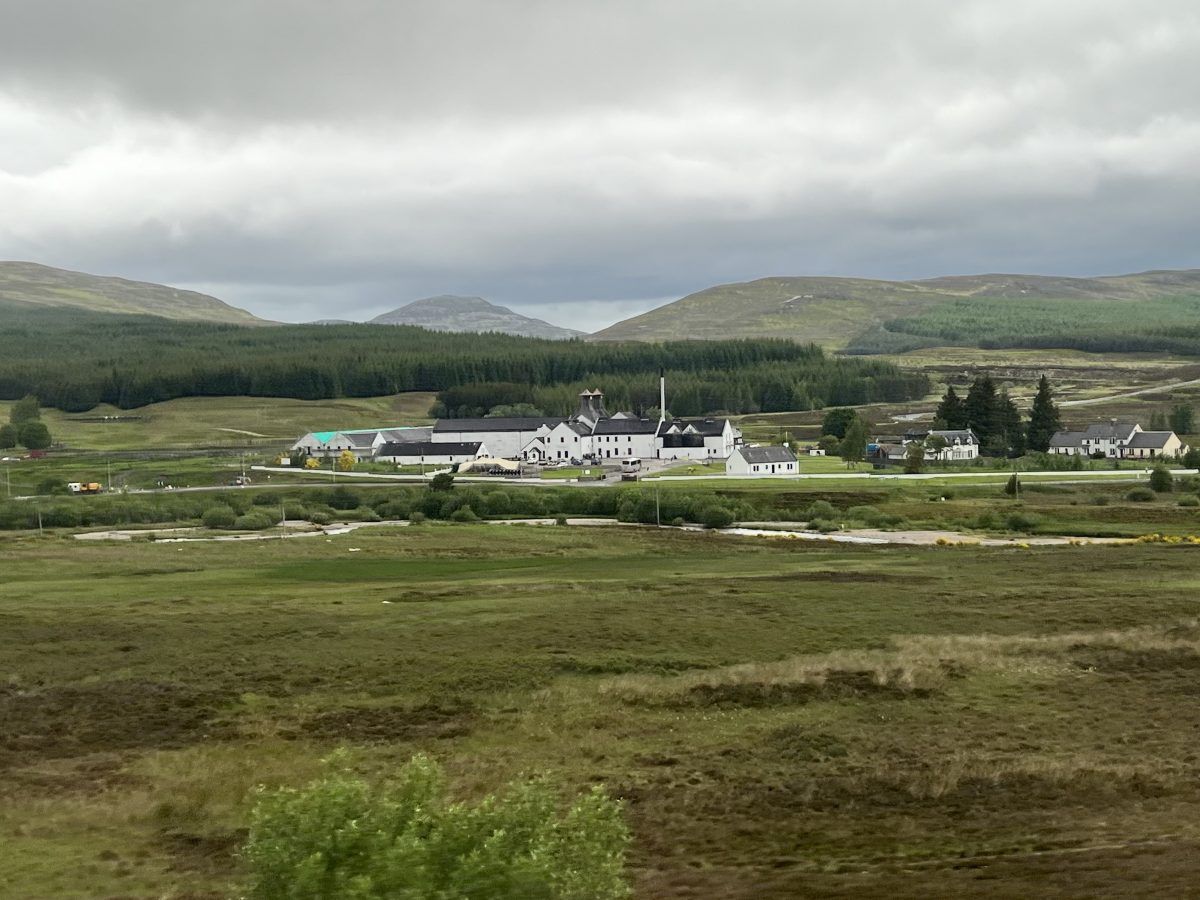
The Balavil Hotel was quite charming. The town of Newtonmore offers hiking and a golf course but not much else. A very peaceful place.

Time for dinner in our stone dining room
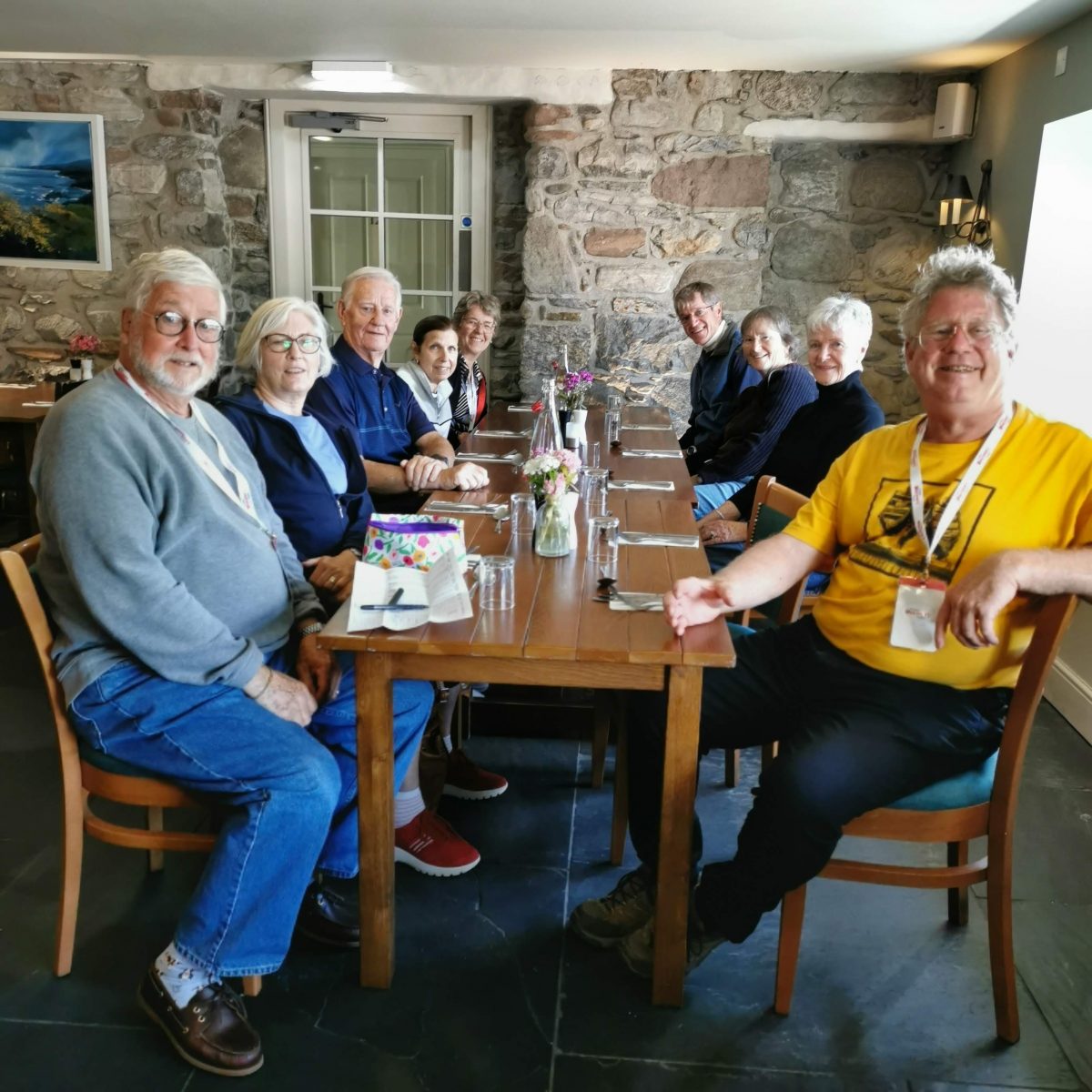
After the long bus ride, I needed to go for a walk. across from the hotel was a path leading to a small lake with a circular path.
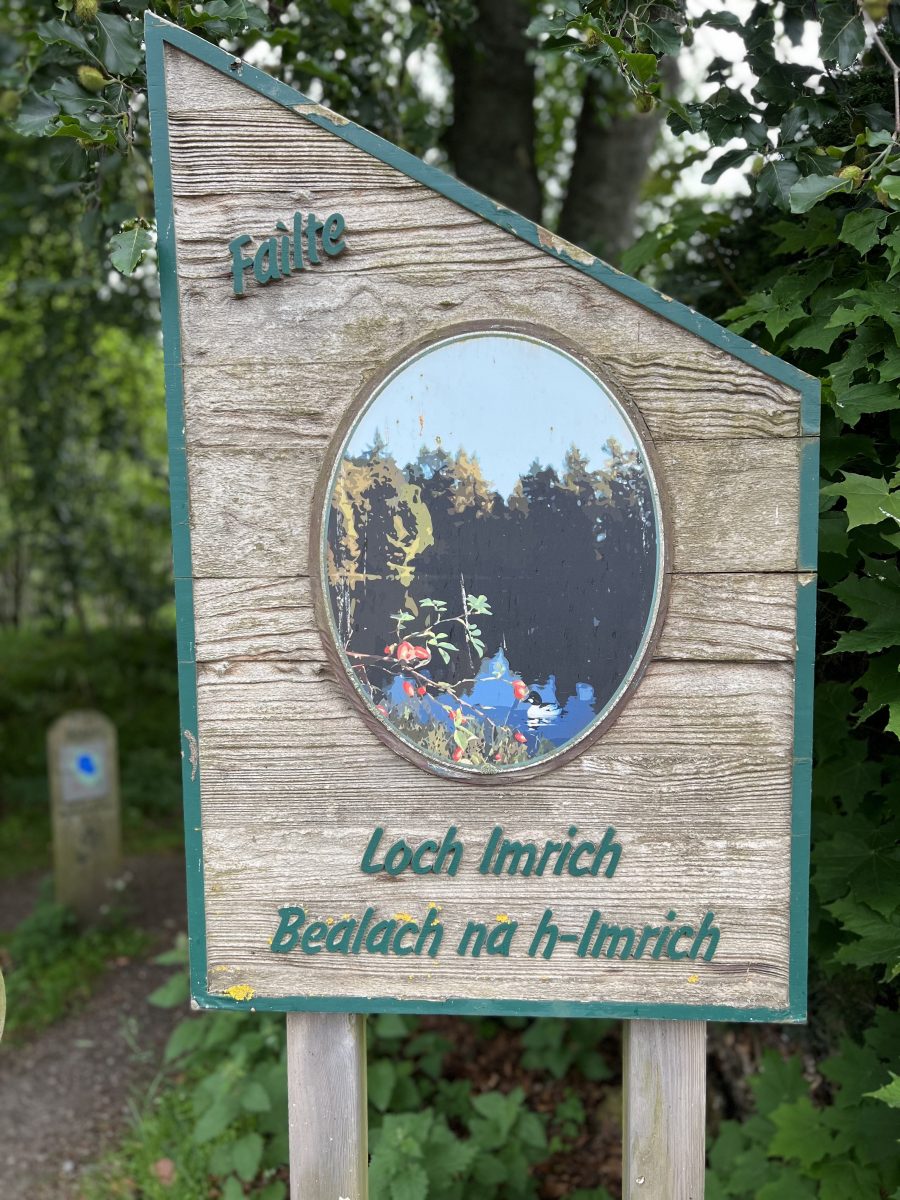
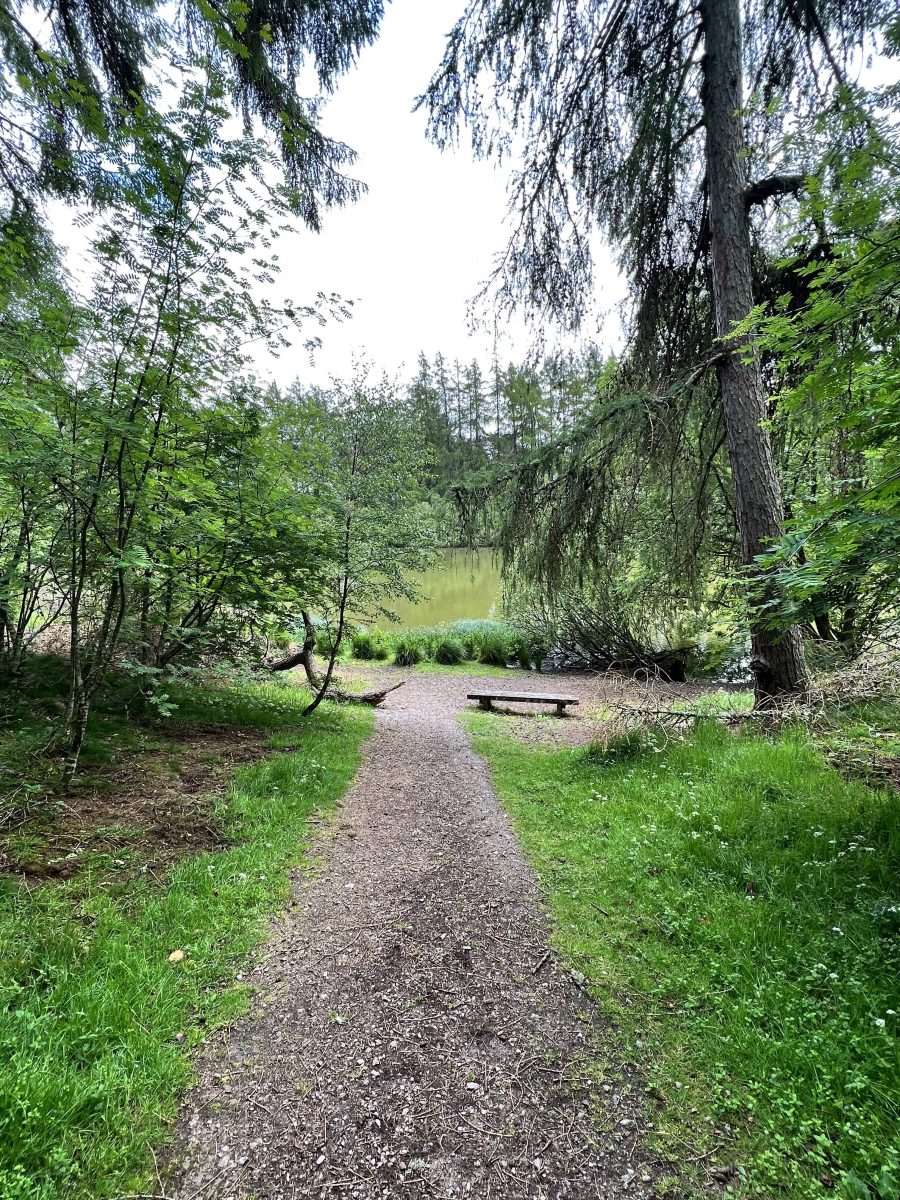
The place was populated by plenty of ducks. It was nice to sit on the bench and enjoy the stillness.
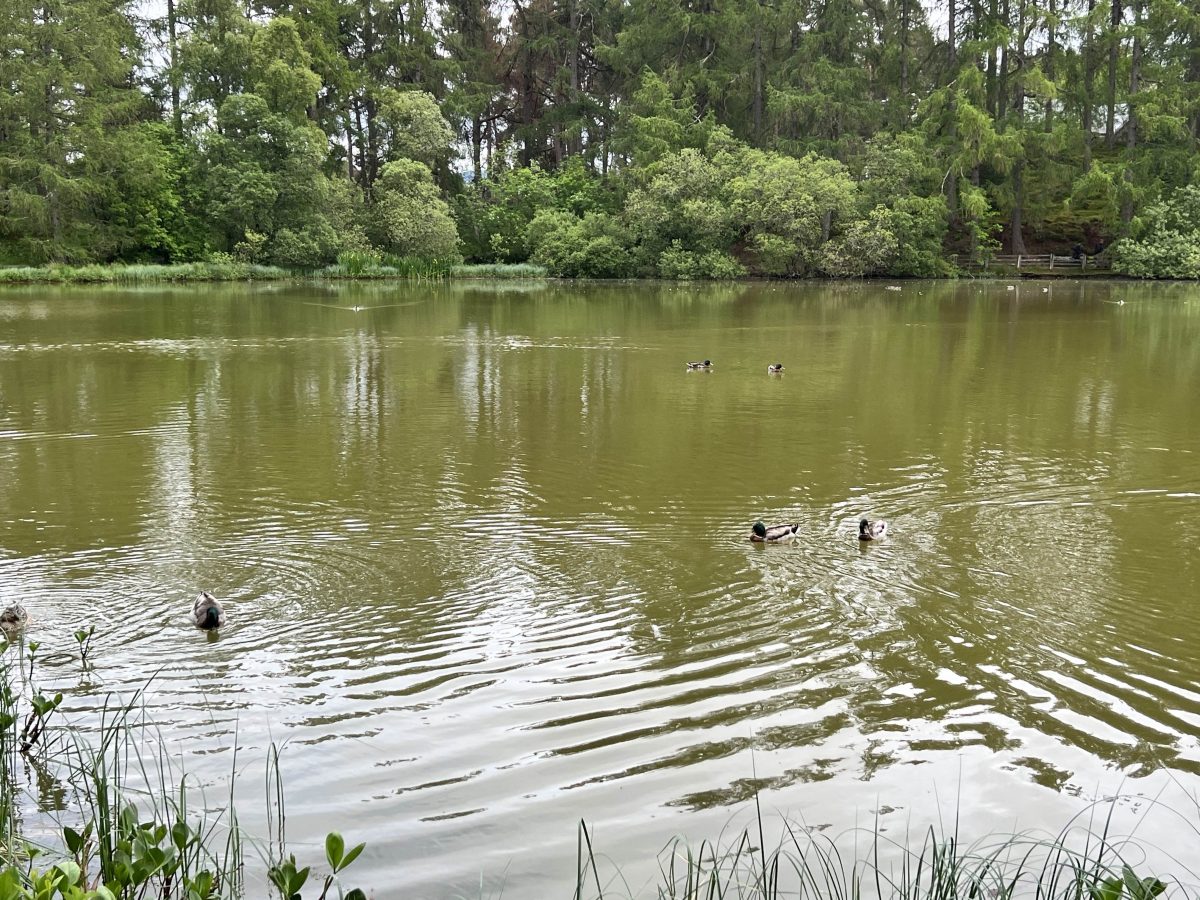
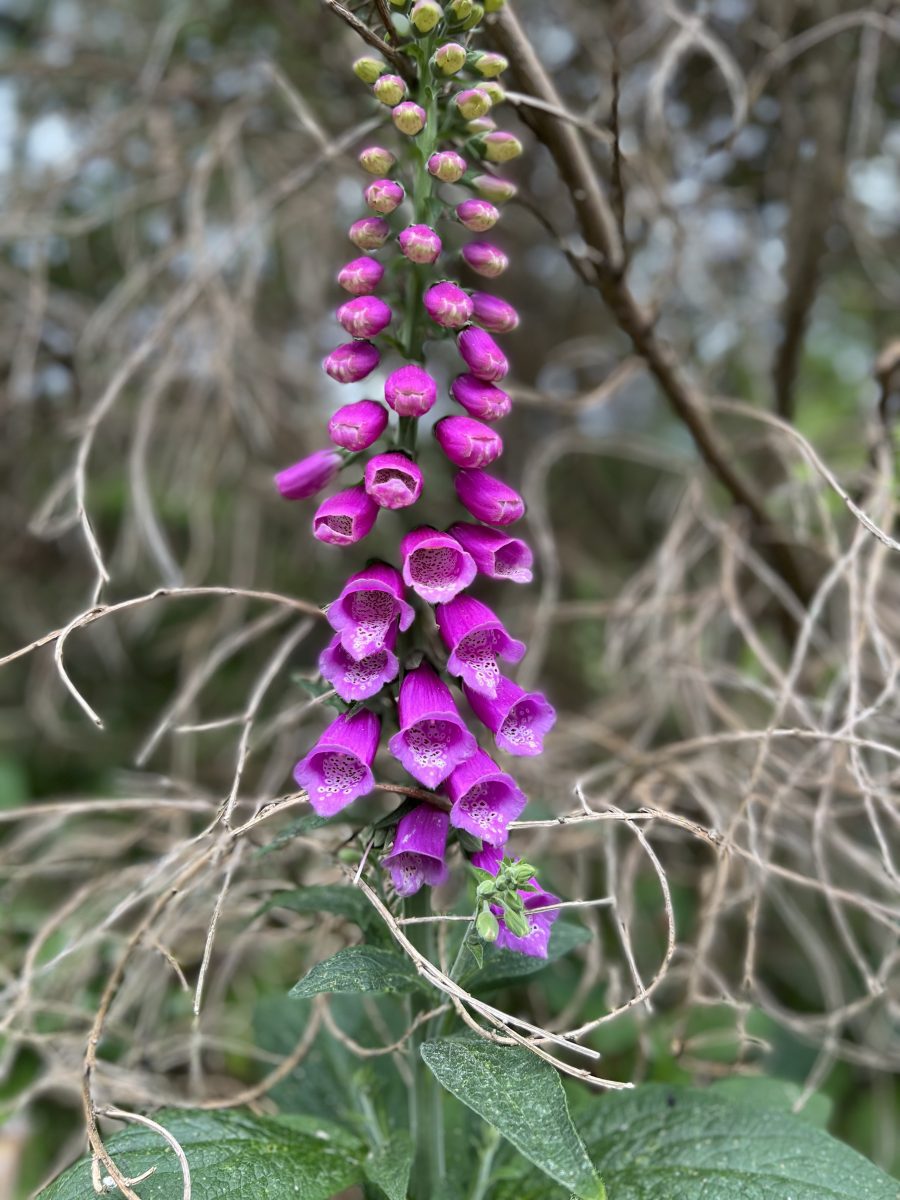
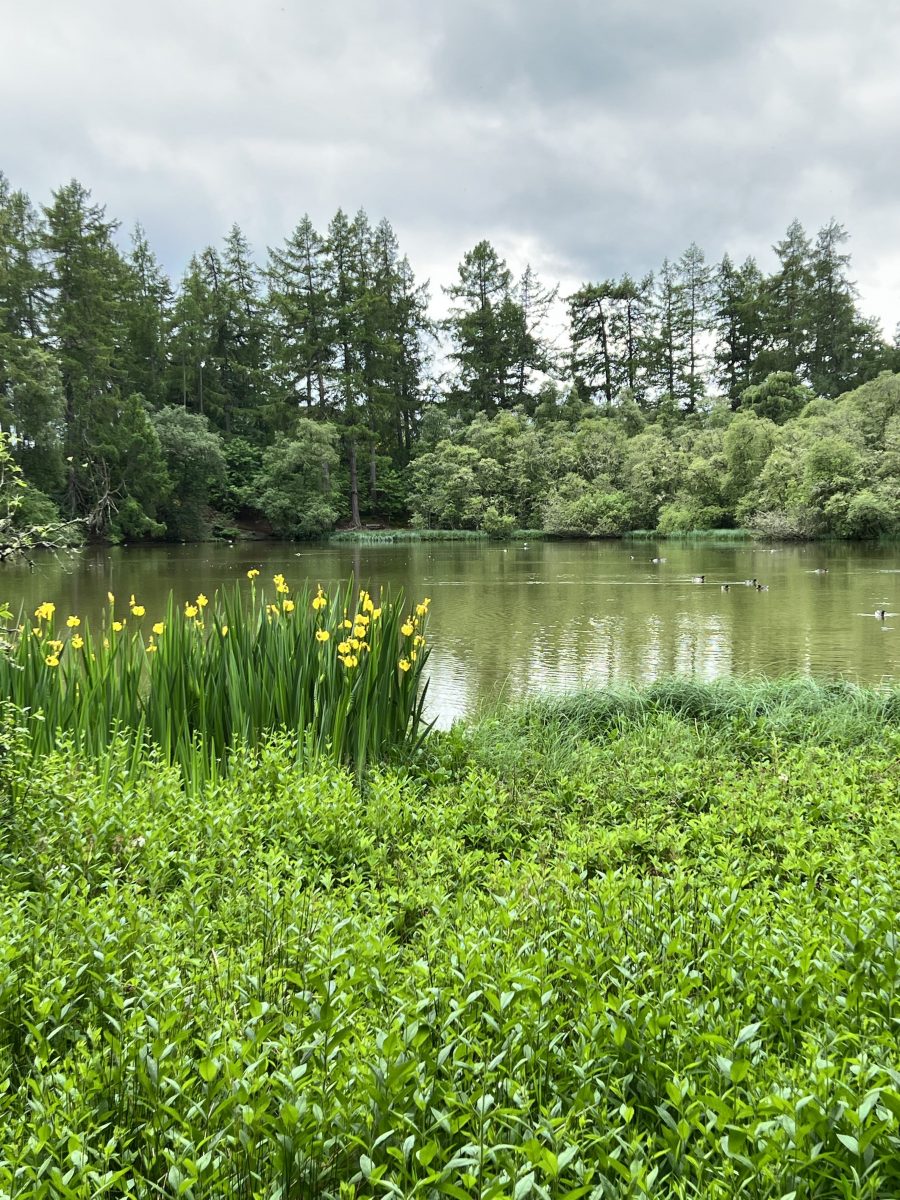
At one point I came across a couple of sleeping ducks.
I went to sleep having had a very satisfying day (other than the missing coos). Imagine being born an Earl and living in a palace? Guess what I dreamed of?
